2017 Beta 430 RR-S
Way More Than A KTM Alternative
MSRP: $9,899
- Durability was excellent during the demanding race and beyond.
- Versatile bike that's capable of being ridden in a plethora of conditions.
- Motor was strong and capable for a mid-sized dual-sport bike.
- Ergonomics weren't loved by everyone.
- Expensive like all bikes in this performance level.
Introduction
- One of several dual-sport bikes produced by Beta for 2017.
- Passed with flying colors in our race test at the 24 Hours of Glen Helen.
How do you properly evaluate a motorcycle? Obviously you ride it, preferably in a variety of conditions. Even better, have a few different riders contribute their opinions on the machine. If you really want to go the extra mile, spend some time working on it. The last piece of the puzzle may be the intensity in which the machine is tested. We’ve found that rider opinions can change from a first casual ride, to a second or third more serious stint, especially when the rider is pushing the bike to their limits. For us, one of the best ways to truly get to know a motorcycle is to race it. For our latest test we could have loaded up and gone to a whole series of events, lining up for a dozen races or more. Of course that would take a lot of time, and naturally we want answers now. Luckily, we had an option.
We took a brand new perfectly stock 2017 Beta 430 RR-S, rode it one time to give it a quick shake down, (read our first impression here), and then put it on the line at the annual 24 Hours of Glen Helen less than a week later, with only a few minor modifications.
We know that the 24 Hours course gets rough and we were old, so we started with Fasst Company Flexx Bars and a GPR Stabilizer Pro Kit. We’ve had great luck with both of these items in the past and consider them necessities at our age. The Flexx bars do a great job of reducing the feedback coming into the rider’s hands, and the GPR Stabilizer provides similar relief by keeping the steering pointed in the desired direction and lessening the effort from the rider. Together they would help us delay the inevitable fatigue, at least for a while. MSR provided some of their Funnelweb Air Filters, Ultra Heavy-Duty tubes, and a hydraulic lift stand for our pit. Maxxis sent some of their Maxxcross SI tires that did a great job of providing traction in everything from mud and silt to the hard pack slippery ridges. We added some sprockets from DDC Components altering the gearing by going down to a 14 tooth in the front but retaining the stock 48 tooth in the rear.
The only other major changes we made was to heavier springs. After a quick poll of the six man team, we realized that most of us are not exactly average sized. A more accurate statement would be that we’re heavier than average. Clearly, the optional heavier spring rate was in order for both the fork and shock. John Braasch at Braasch Motorsports installed the springs and gave the bike his typical race prep and we were finally ready to go.
As we mentioned in our Update report, we felt like the new Beta is one of the most versatile bikes on the market, so we started the test by riding it to Glen Helen the day before the race, even spending considerable time on the freeway. The Beta performed admirably, in fact, we would almost say it was comfortable cruising down the freeway at 70 mph, a rare trait for a dual-sport machine. Once we arrived to Glen Helen, we added the bars, the stabilizer, and the 1 tooth smaller counter sprocket. In addition, we added a necessary dry-break ready IMS over-sized tank donated by the Purvines Racing Beta team. Although the stock Beta tank has the capacity to go an hour at a time, we ended up having 22 pit stops and having the unscrew the gas cap, pour gas in from a regular gas can, then screw the cap back on takes way too much time when you have that many pit stops. Instead, the IMS tank and dump can allows the biked to be in and out out of the pit in less than 10 seconds. The transformation to race machine was then completed by removing the blinkers just to be safe so we didn’t lose them and applying some requisite stickers. Now it was ready to go to the line.
The one remaining component, that is critically important in this type of racing, is the light. The stock light on the Beta is about what you would expect. It turns on, provides enough visibility to ride, and is DOT approved. It is not, however, capable of providing the quantity of light necessary for off-road racing. We used a combination of different lights from KC Hilites mounted in a frame that could be quickly installed when the sun went down. A 10” FLEX Array was mounted across the bottom with three LZR Cubes mounted just above. The FLEX provided the long range coverage, focused far out in front of the bike while the LZR Cubes could be aimed independently to provide a wide pattern closer to the bike. The end result was a lot of light, exactly where you need it. Our design also incorporated something a little unique. Even though the Beta has one of the most powerful lighting circuits we’ve seen, rated at 200w, we only used that power to support half the lights. The other half would be powered by a battery carried by the rider. The solution is simple and it worked perfectly. When the next rider gets on the bike, they plug in via a coiled umbilical cord. If they happen to fall, it simply unplugs. We do this to have two totally independent power sources which provides redundancy and some added peace of mind. Ask any racer who’s logged a lot of night miles what happens if the light goes out at high speed and you’ll know why we do this.
For this test the majority of the opinions were from racing it. But we also took the bike out to our regular testing grounds and trail rode it for a day at a more dual-purpose pace as well. Right after an oil change of course.
Changes
- Suspension improvements.
- More rigid triple clamp.
- New gas cap and Trail Tech GPS.
- Engine refinements.
The changes in 2017 are really refinements to the already strong package. Continued upgrades to the suspension see the Sachs forks get an additional 5mm of travel and a slicker oil internally. The shock see an improved high and low speed adjuster. The triple clamp is also has more rigidity. The gas cap has a built in breather system and a Trail Tech Voyager GPS/Computer is standard equipment.
The engine was tuned up with a 42mm throttle body and some refined programming of the ECU. The cam profiles were altered and the springs improved to increase power and lessen engine braking. There is also a dual map ignition switch standard.
Power
- Torquey and light feeling power.
- Fuel Injection has improved since its inception.
- Smooth power from top to bottom.
The 430 powerplant cranks out plenty of ponies and several riders talked about how they made passes climbing some of the steep Glen Helen hills that surround the motocross track. Yes, against 450cc motocross bikes. There is something for getting traction no matter how much power you crank out. The peak performance is not the high point though. It makes plenty of power but doesn’t have that aggressive hit common to some bikes more purely focused on racing. Instead it pulls strong and smooth from the bottom to the top.
The size of the 430 really plays to its advantage. It is like a 350cc four-stroke with tons of added torque or a light feeling 450cc bike that you can ride hard without getting into trouble. With fuel injection the Beta fires right up and settles into a smooth idle. In fact the FI seems much improved since the first versions we tried on the 350cc four-stroke, especially on the bottom or at low-low RPM where it is now as good as anything. The power builds progressively but with a Beta characteristic we seem to really like. It has just the right amount of snap and hit on the bottom, combined with an excellent clutch then the power is rather tame across the mid-range. But that is only in comparison to how it comes on on the top end. Here the bike surges and really likes to rev out far. We were not hitting a rev limiter and it seemed like there wasn’t one based on how far the power pulled. It makes as much power as the tire will handle and like we said, it will pull bikes that make more power because the Beta really puts power to the ground.
As mentioned, the clutch pull is light and the engagement is smooth and very consistent. It makes riding a gear high easy and shifts are smooth and positive. We never experienced any fading even with 24-hour old oil.
The engine uses a two compartment oiling system to keep the transmission and motor fluids separate. Over the 24-hours we never had to add oil. When changed after the event, it was black, but not as bad as we have seen before. The filters were clean and the motor sounded as good as it did when brand new. Of note is that the Beta seems to run on the hotter side of four-strokes, usually in the 230 Fahrenheit degrees zone a lot of the time where other bikes stay closer to 200 degrees in the same conditions. The cooling fan does not come on till 230 anyways so this must be where they want the coolant temperature.
The only other issue we experienced was the bike started idling a bit faster late in the race. This was likely due to the lost coolant and the ECU getting false reading on the bike’s engine temperature. When the coolant was refilled and the bike left to idle till the fan came on, it was back to normal and has never missed a beat since.
The motor’s performance never unsettles the chassis or causes the bike to react in unpredictable ways. It just rolls power on in a controlled fashion. It may not feel the fastest, but I would argue that in many cases, certainly in endurance racing, a smooth power delivery will reduce mistakes, require less energy from the rider, and ultimately go faster over the long run.
Suspension
- Sachs has improved their components over the past few years.
- Stiffer springs drastically improved the suspension for heavier riders.
- Works well in all conditions even when bottoming out.
- Clickers make significant changes.
Beta has been using Sachs suspension components for the foreseeable past and seem to never give up or stop tinkering to get better and better performance out of them. And just like WP in the past, they were not the best a number of years ago. But things have changes in the last few years. The fading issues in the shock and inconsistant damping in the fork are things of the past.
Initially the heavier riders (average of 200 lbs.) on the 24-hour team felt the suspension was on the soft side. But after installing stiffer springs, we began to appreciate the Beta’s Sachs components. Every rider on the team commented on how the bike soaked up the square edge bumps that develop on the fast sections of the course, how stable it was at high speed, and how easy the bike handled the rocky sections. Every year our riders are taping up blistered hands late in the event, but this year, nobody was complaining. It was possible to exceed the capabilities of the suspension though. Jumps could easily bottom the bike as is to be expected for a trail or dual purpose machine. A few sections developed very large whoop-de-doos and some g-out holes where even our lighter riders were able to bottom out both ends. Even then, the bike stayed under control. All in all, It was a good trade off and most of our riders thought the suspension was actually the perfect compromise for the event and there was still some clicker adjustment that could have made these problems less noticeable.
The RR-S has a very balanced feel and the suspension seems set up to go fast on single track. It holds the bike up and then moves pretty free in the stroke with adequate bottoming resistance. The rear shock has a little more progression than the fork and it also feels like it has 15-inches of travel as it moves a long ways in comparison to the feeling you get on other bikes. The rebound side is very controlled and if needed, the adjusters will make significant change in either direction. We left ours stock.
Chassis - Handling
- Heavy on the scale but light on the trail.
- Setting the sag correctly is very important for stability.
- Brakes are strong.
- Clutch pull is light and shifting is smooth.
If there were an area where the Beta has some standout traits it is in the handling. The one thing this bike does is mask its weight. The worst thing this bike has against it is what the scale tells you the bike weights. Ours was 278 pounds with heavier tires and the turn signals removed, full of gas with the stock tank. That is not light but none of the riders guessed that weight after riding the bike. They were sure it was much closer to a 245 pound KTM 350. Lift it onto a stand and you feel it.
In riding, the bike is agile and light on its wheels, something that all Betas seem to have in common. The only time you really feel the bike get heavy is when you are really pushing hard and trying to get the bike to “flick” in direction change or when the suspension is heavily loaded and you get the bike wound up. These are things it takes a high level rider to even explain or even know they are pushing the bike this hard.
Opinions varied a little on the stability, but were still generally positive. Some of the lighter riders complained of a bit of twitchiness in the front end in the ever growing braking bumps. Some of that was due to the rear sag not being set to their weight. It was suggested they wear diving weights or some other ballast to bring them more in line with the team’s average, but they both declined. Beyond those comments, everyone felt the bike had a very neutral feel and even the riders who had never ridden it prior to the race said they felt comfortable right away.
This was never more evident than at the start. Our first rider had only ridden it to the start line. We watched him take it a little easy through the first couple turns but by the time he was through the motocross section, he looked to be at home and right at his race pace.
The other stuff – The controls and components on the Beta all work well. Hydraulic clutch was perfect throughout the race. The brakes on both ends were strong. Shifting is good although a couple riders commented that the Beta definitely likes a bit of clutch when going through the gears. The shroud, seat, and side panels are well positioned without any edges or high spots to catch knees or prevent the rider from easily moving around on the bike. All the controls are right where they should be and worked without any issue.
What didn’t we like – We asked the riders multiple times about what could be better and didn’t get much feedback. Some of the heavier riders thought they might like even the next heavier set of springs and a couple felt like the steering required more input than they like in the tight conditions--this is a side effect of the GPR steering damper we added. For performance, that was about it.
Design wise, we didn’t like the locator on the swingarm that holds the brake mount in place. It’s too small and the caliper mount can easily get out of position as you’re sliding in a new rear wheel. It helps to have an extra hand on the caliper, but of course, its rocket hot in a pit stop scenario. The other thing we didn’t really appreciate was the air filter design. We loved that it could be changed without any tools and the push button seat release is great, but it’s difficult to remove without dropping dirt into the air boot. Then when putting in a clean filter, it seems very easy to not get it in just right and risk a bad seal. We didn’t have any problem, but we also took a lot of extra time making sure the filter was seated correctly. A more positive locator pin on the filter cage would be a welcome improvement and lower the risk of a costly mistake.
Similarly, multiple test riders felt that the location of the brake pedal and shifter weren't in the normal position. They both were farther from the foot peg and finding the shifter and brake pedal was a little more difficult riders with normal sized feet. Larger boot sizes love this. Also, some taller riders felt the cockpit area was a little cramped. The handlebars are a little too close to where you sit on the seat, though we feel the Beta has a footpeg position that is just a little lower and farther back than normal for most.
Conclusion
- Durability shined during the 24 hour long event.
- Very versatile bike that can be ridden anywhere.
- Riders who were unsure about Beta and no longer unsure.
To say the event went smoothly for our team would be a huge understatement. We started the race at 10 AM Saturday morning, changed three air filters, two rear tires, one front tire, and replaced the rear brake pads sometime in the middle of the night. That was it. Aside from those expected maintenance items, and of course filling it with gas, we didn’t touch the bike. We completed 47 laps around the approximately 9.7 mile course and finished 1st 40+ Expert and 10th overall.
The 24 Hours of Glen Helen first started in 2000 and we’ve put a team together every year since, and we’ve finished most of them. Every year something goes wrong, sometimes, a lot of things go wrong. This year it was nothing. At the finish line as I sat on the bike, still catching my breath, I looked the bike over for any broken, damaged, or missing parts, there were practically none. The right hand-guard had been tested against a much stronger tree sometime during the night and was now gone and one of the five screws holding the right radiator shroud was missing. That was it. If we had a reason to do it, and had six fresh riders, I think we could have ridden the now slightly less shiny Beta back to the start line and started all over again.
So what did we think about the 2017 Beta 430 RR-S? We polled every rider immediately after their first ride on the bike and then again after the finish. The feedback was pretty consistent, everyone loved the new Beta and felt like it was a perfect bike for the event.
The Beta 430 RR-S is an absolute pleasure to ride. It does everything well and felt at home on everything from fast roads to the national MX track. It runs great and handles well in a wide variety of conditions. It’s light and nimble in the tight and technical sections and when the trail gets rough, it soaks up the chop so remarkably well that every rider mentioned it in their review. The Beta proved to be very reliable and even after 24 hours of straight abuse, it seemed ready for more. Before we started, we wondered if it could be so versatile that it really could do it all, like the Swiss Army knife of motorcycles. Could we really ride it ride it to the race, then not just ride the event, but race it, hard, and then ride it home? Turns out we could, and we did.
Recent Product Tests
Leave a Reply
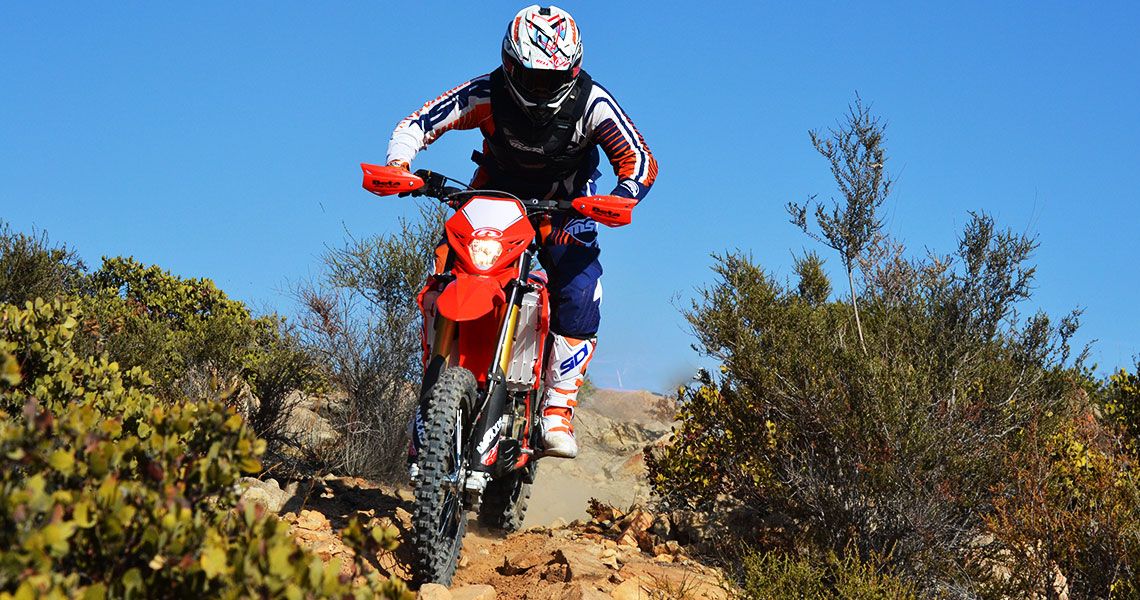
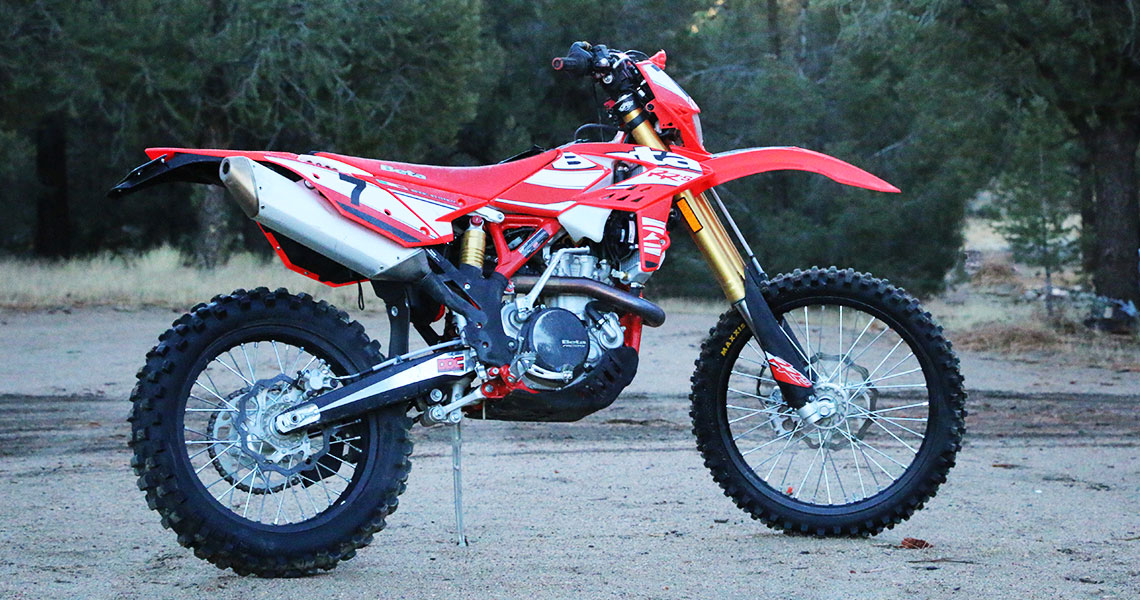
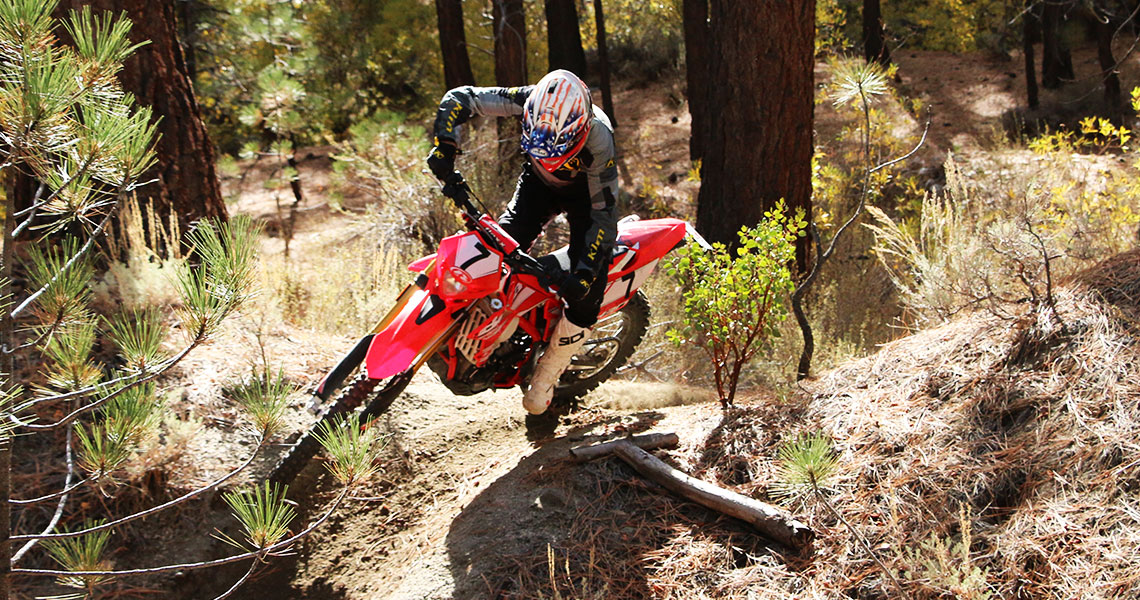
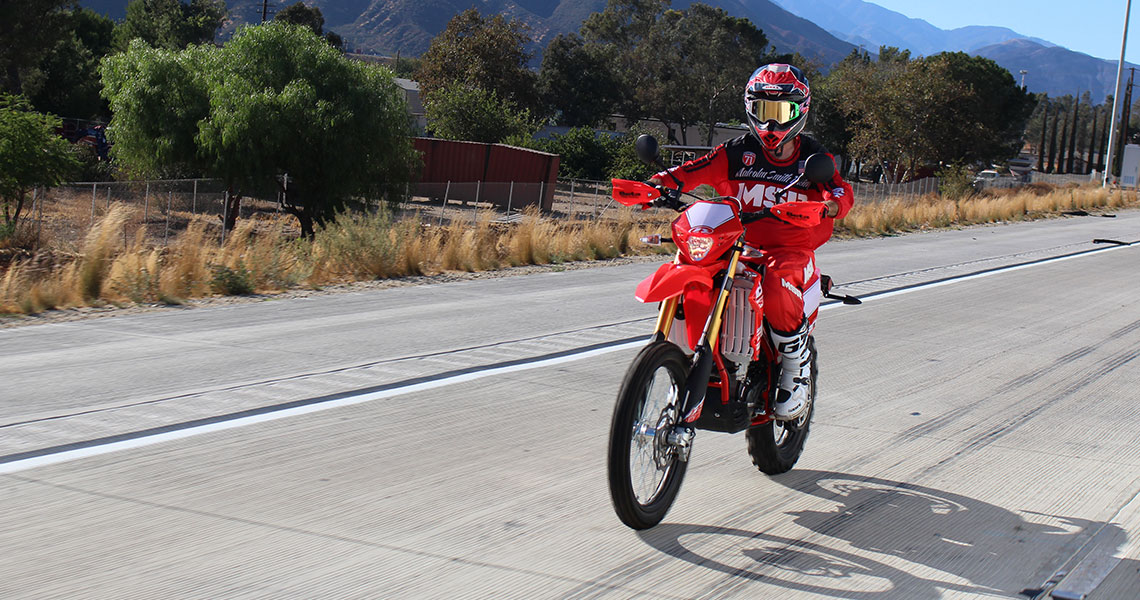
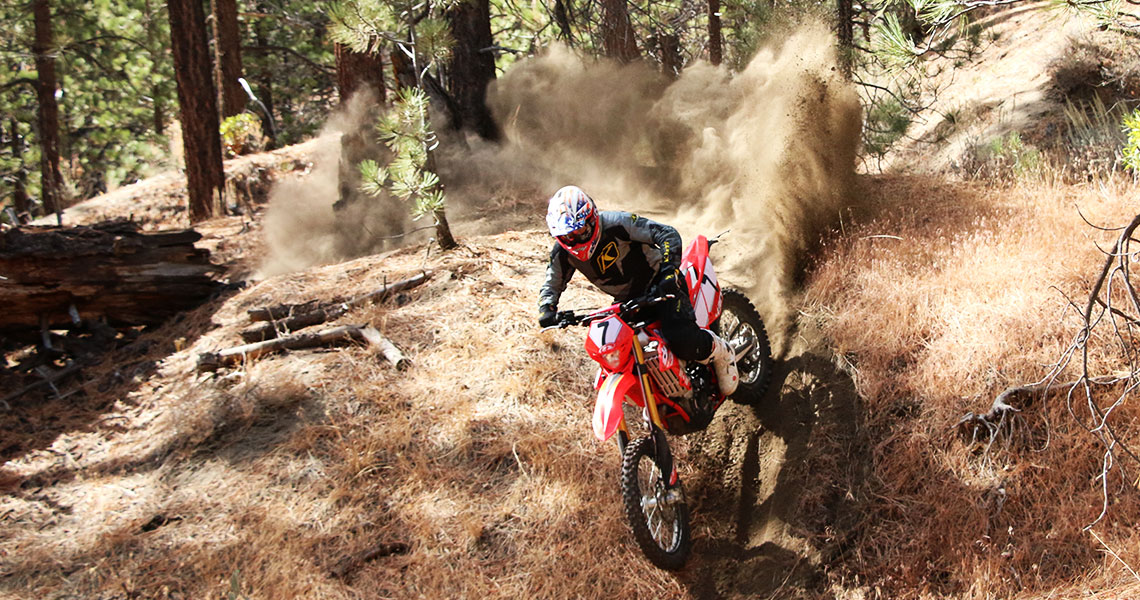

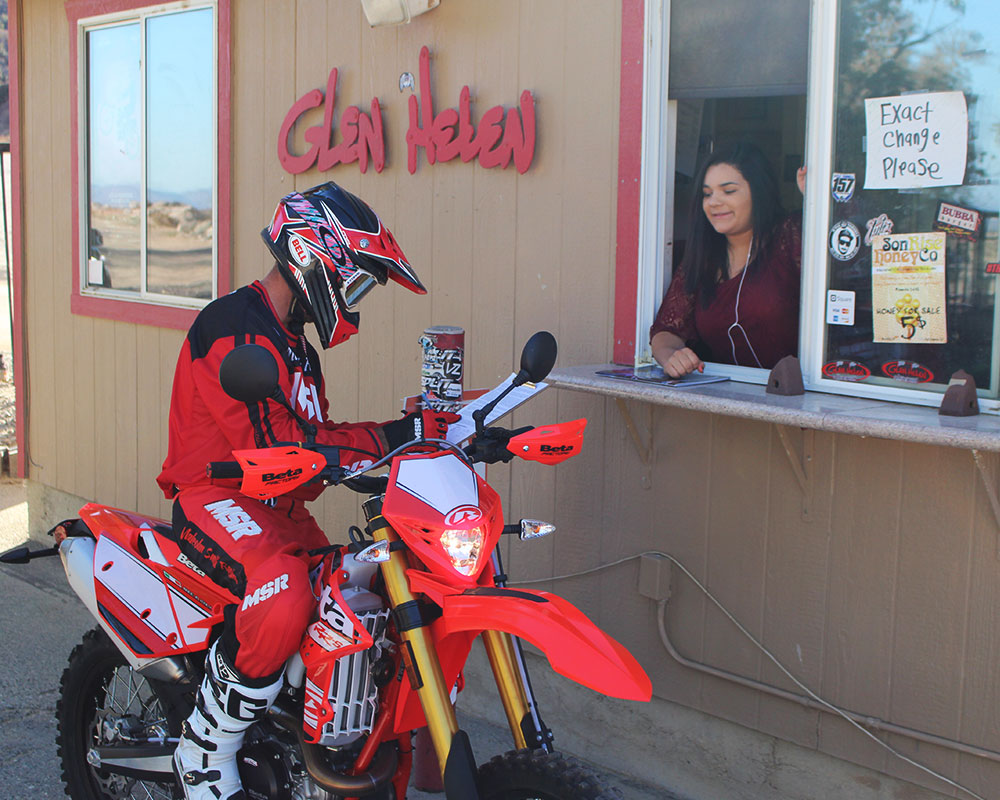
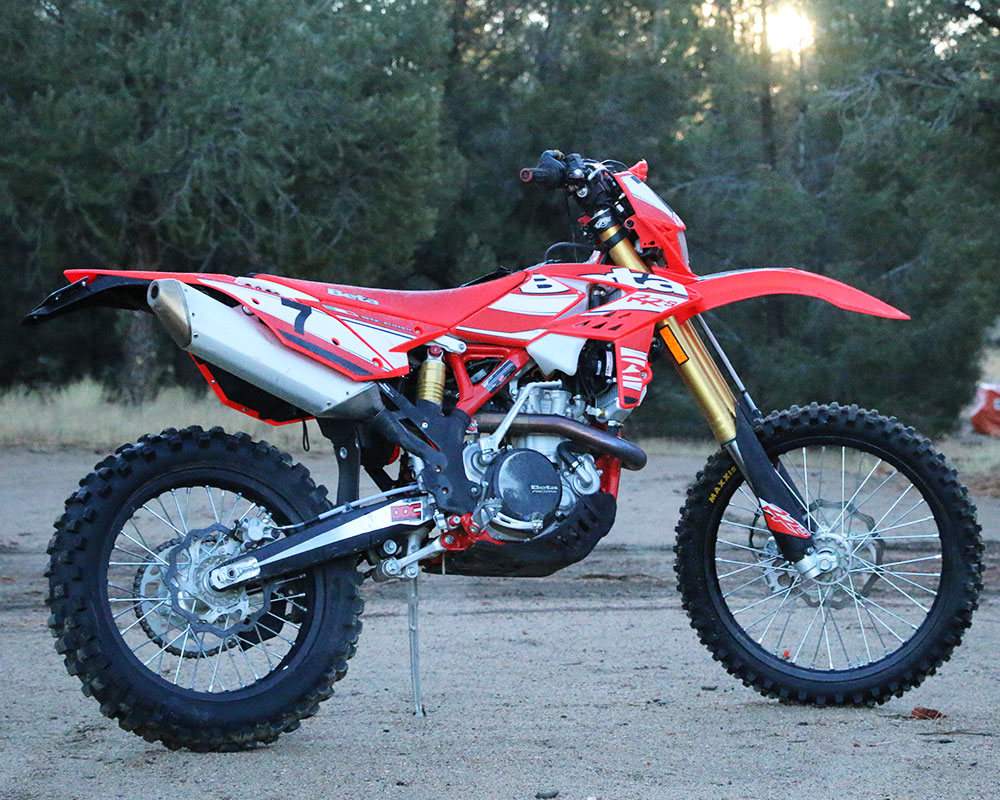
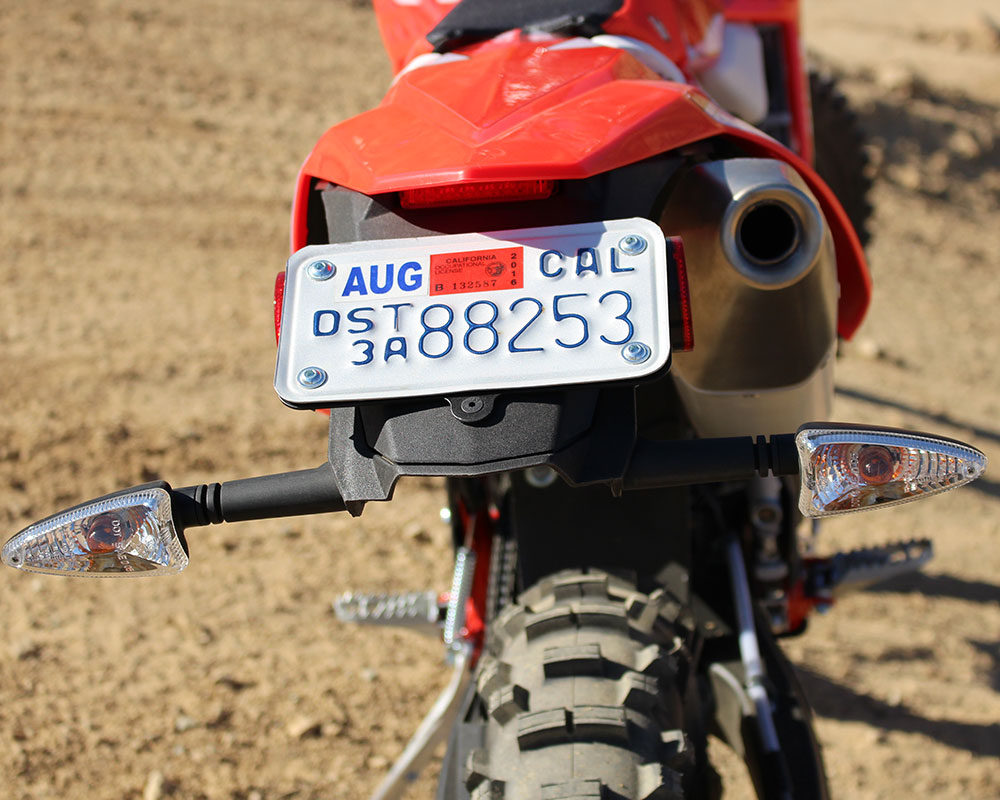


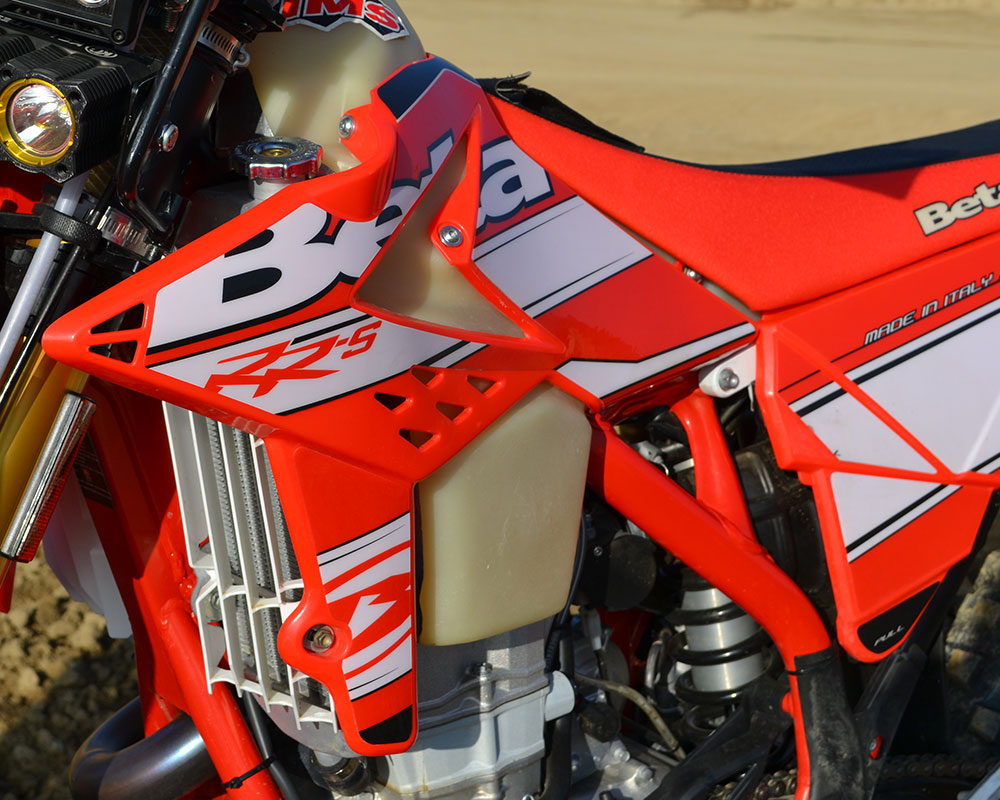




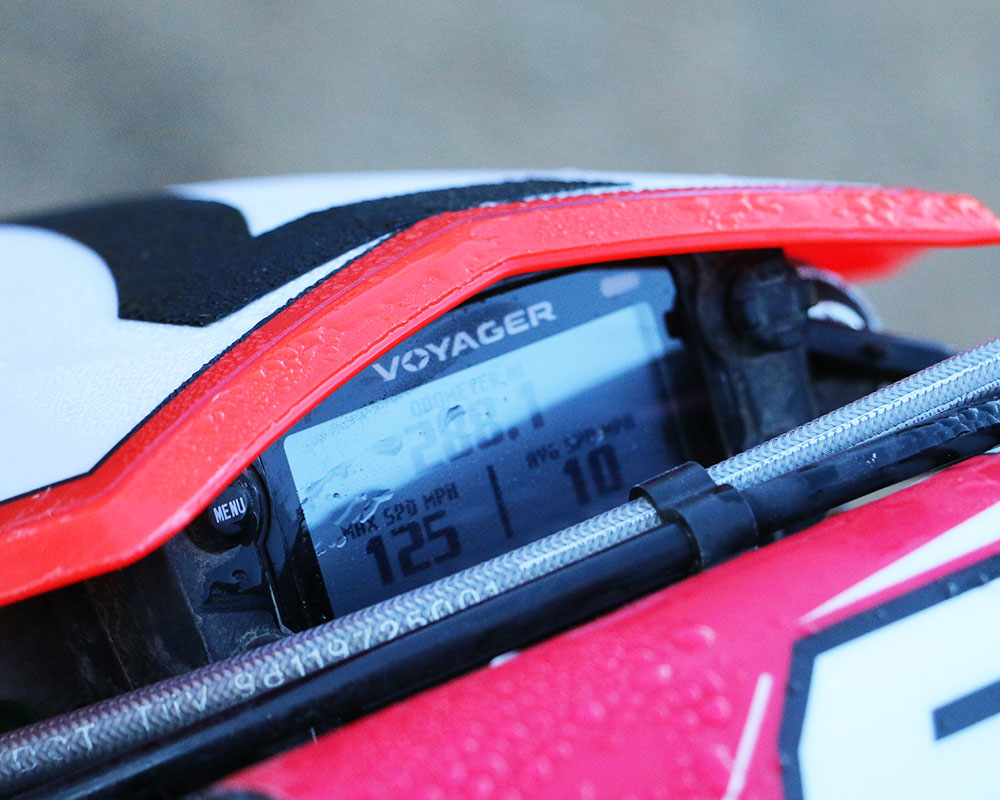
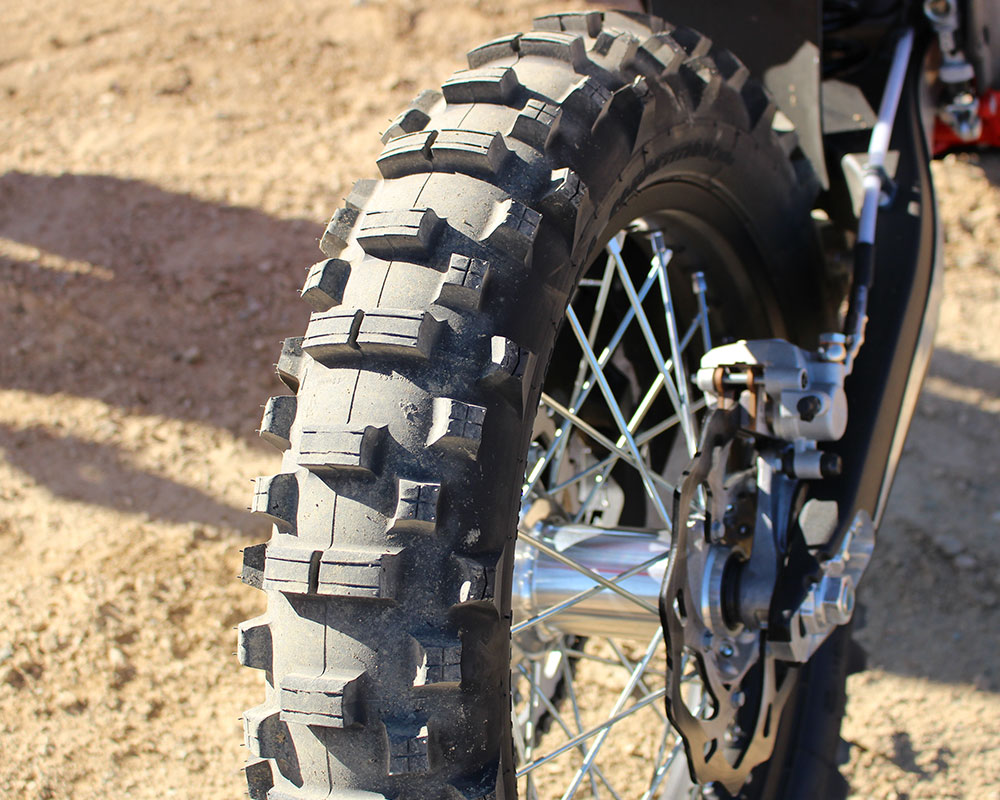

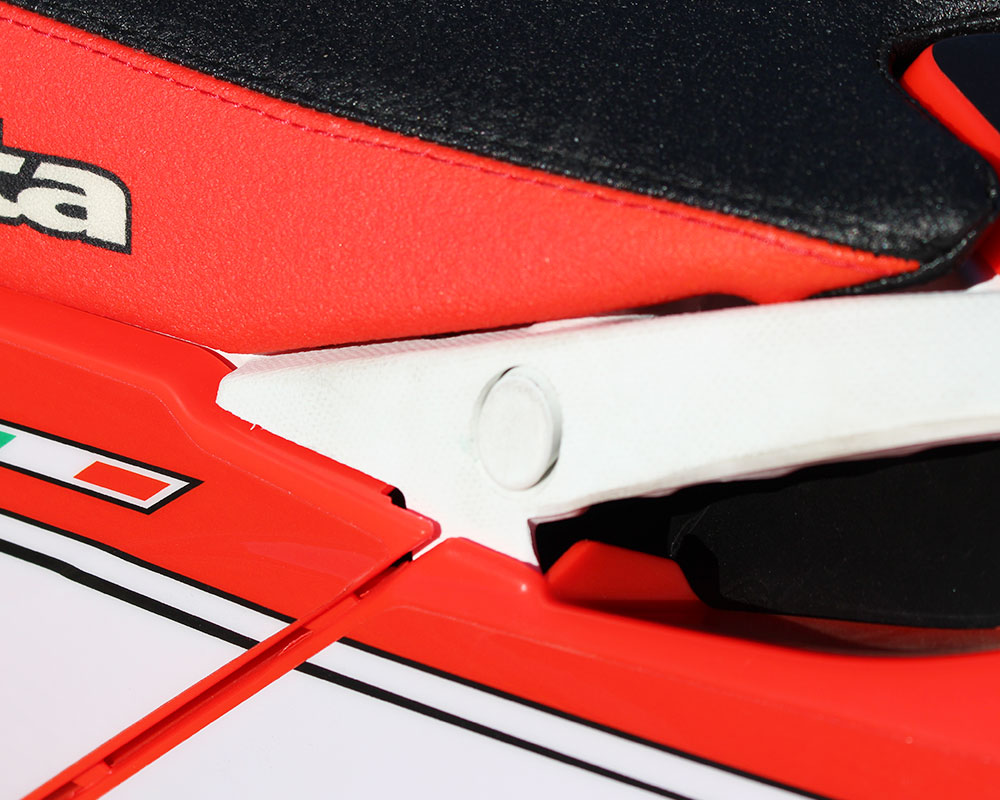
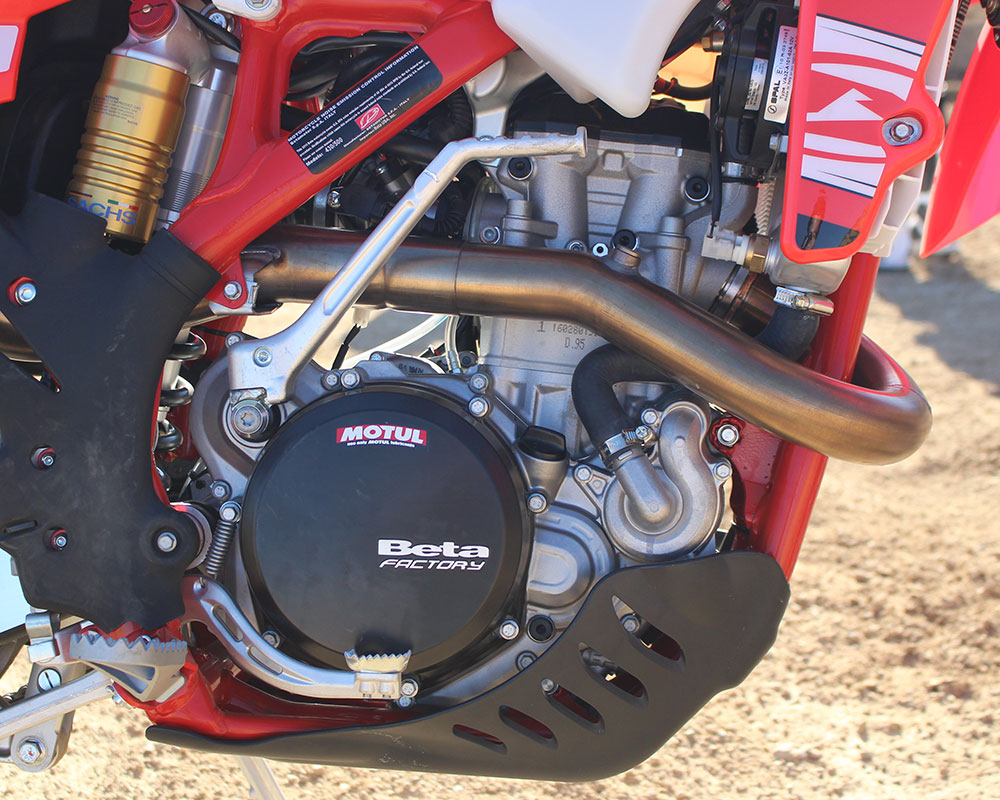
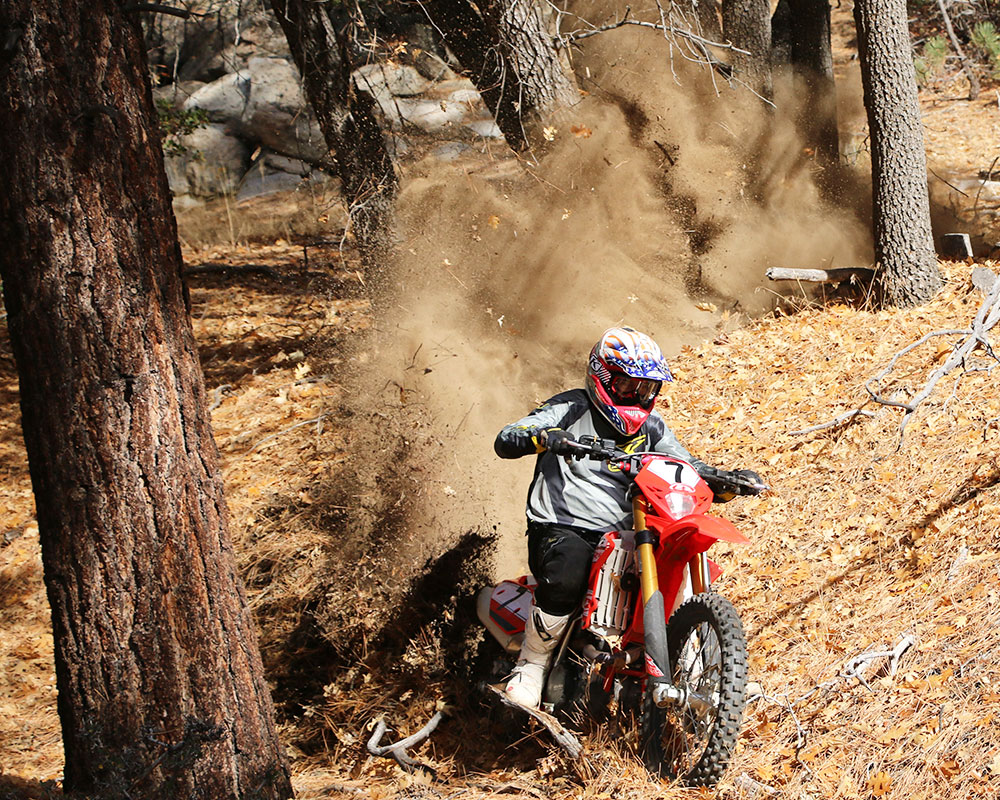
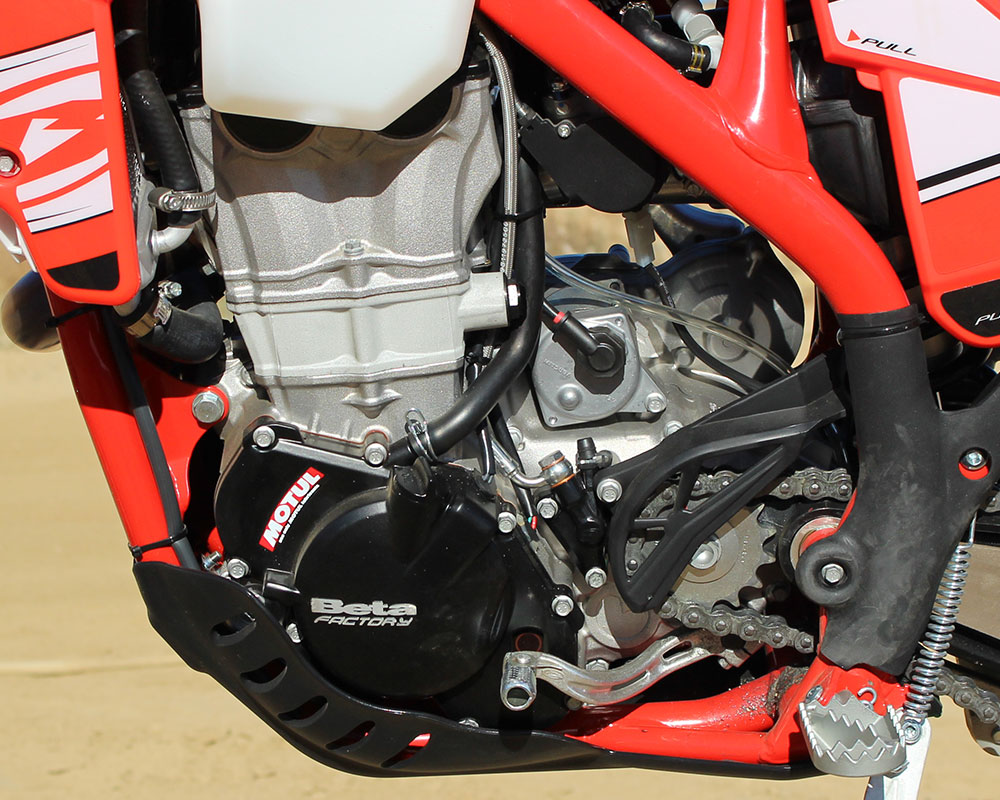

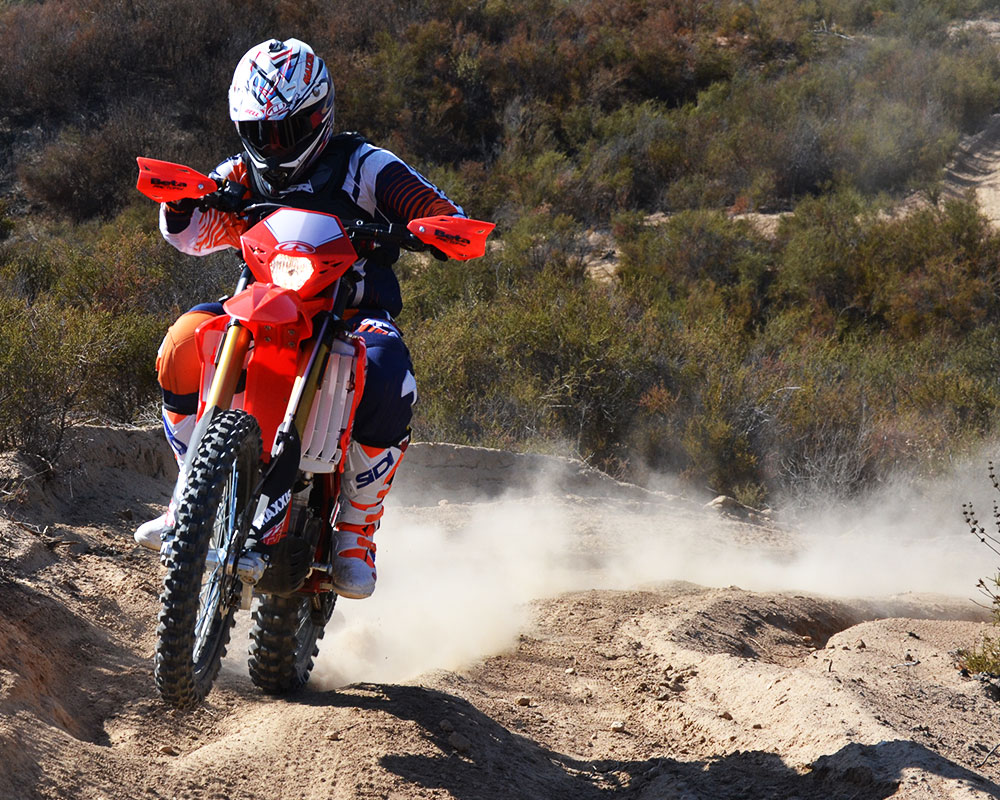
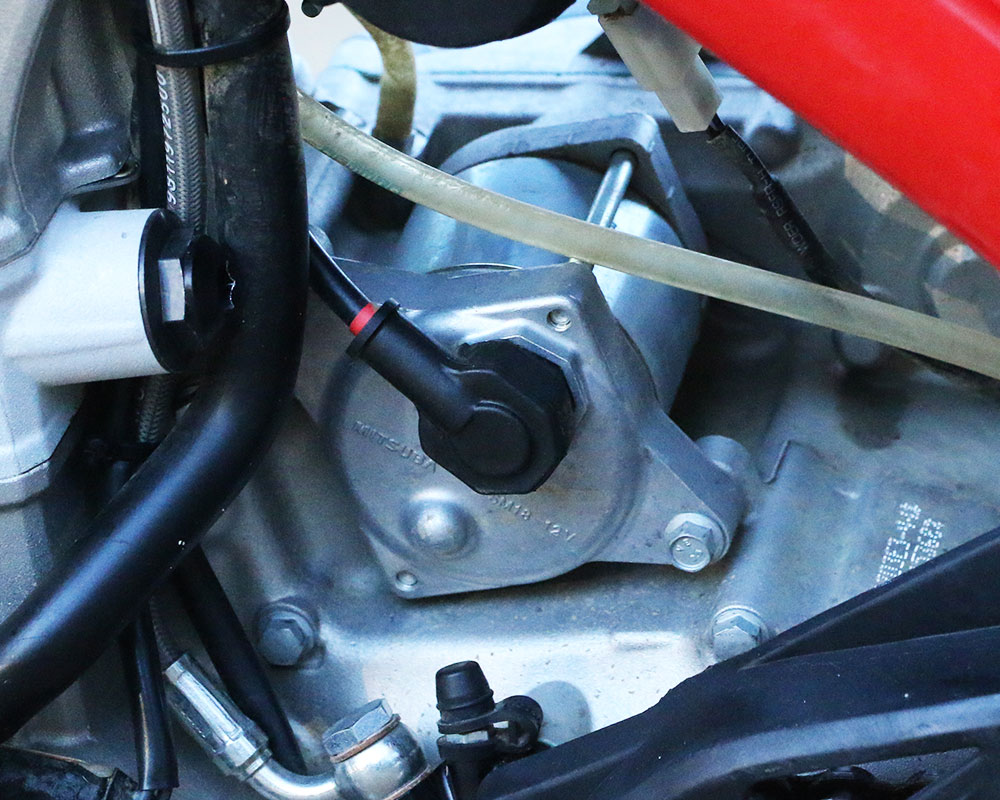
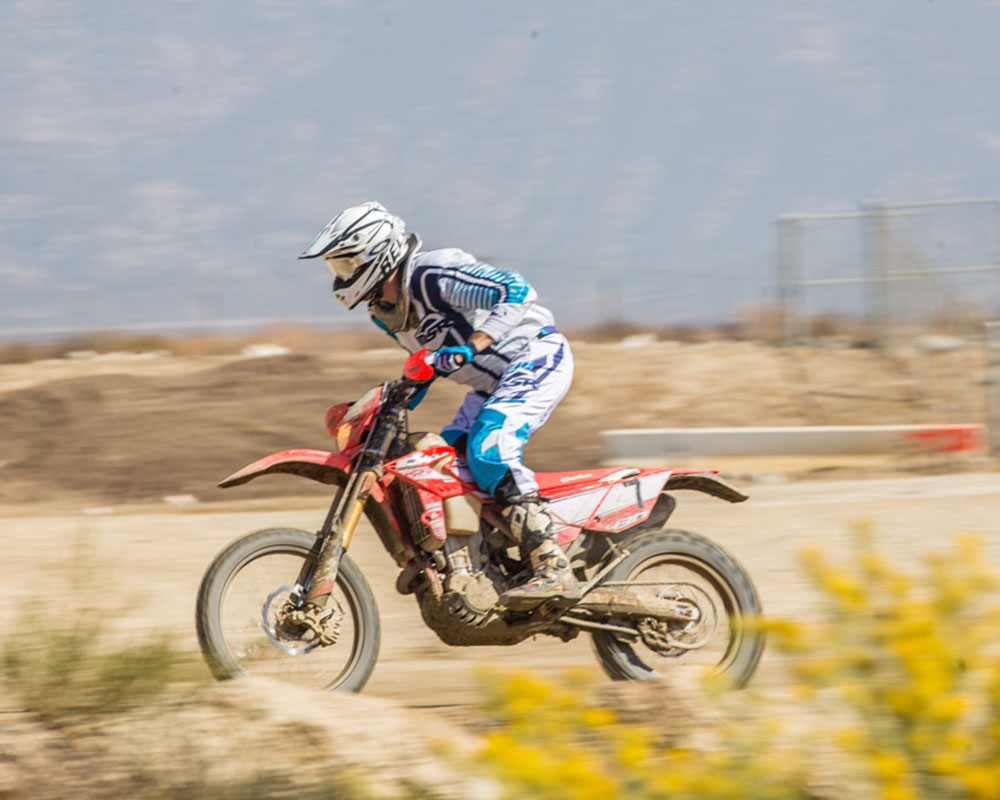
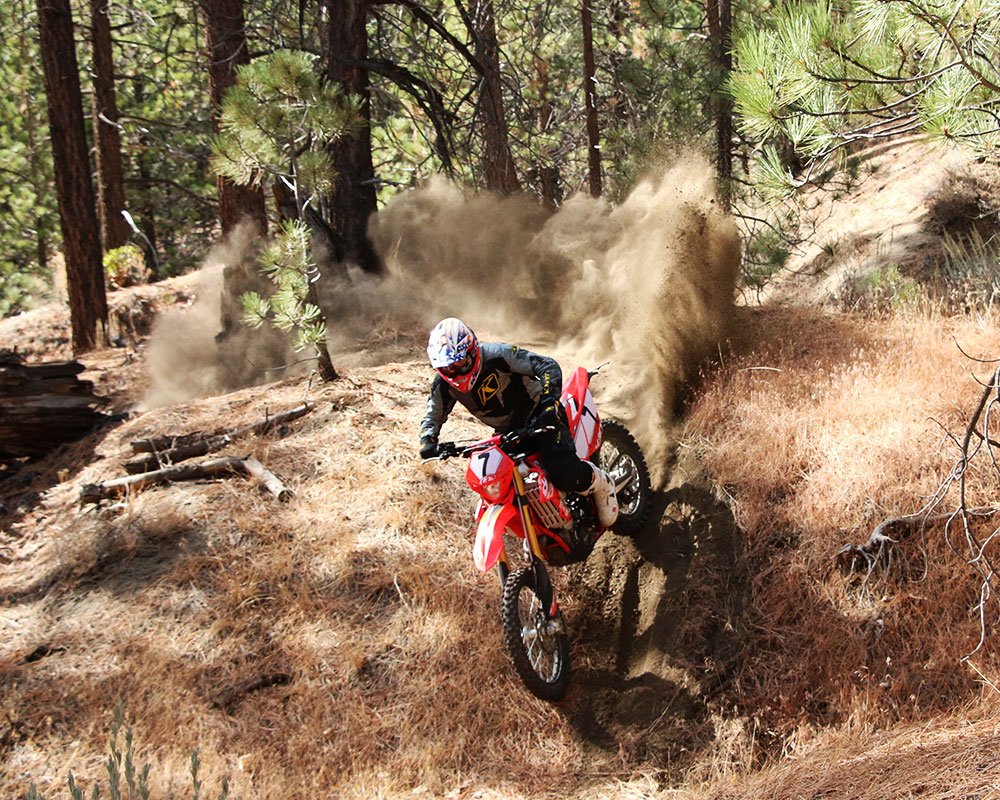
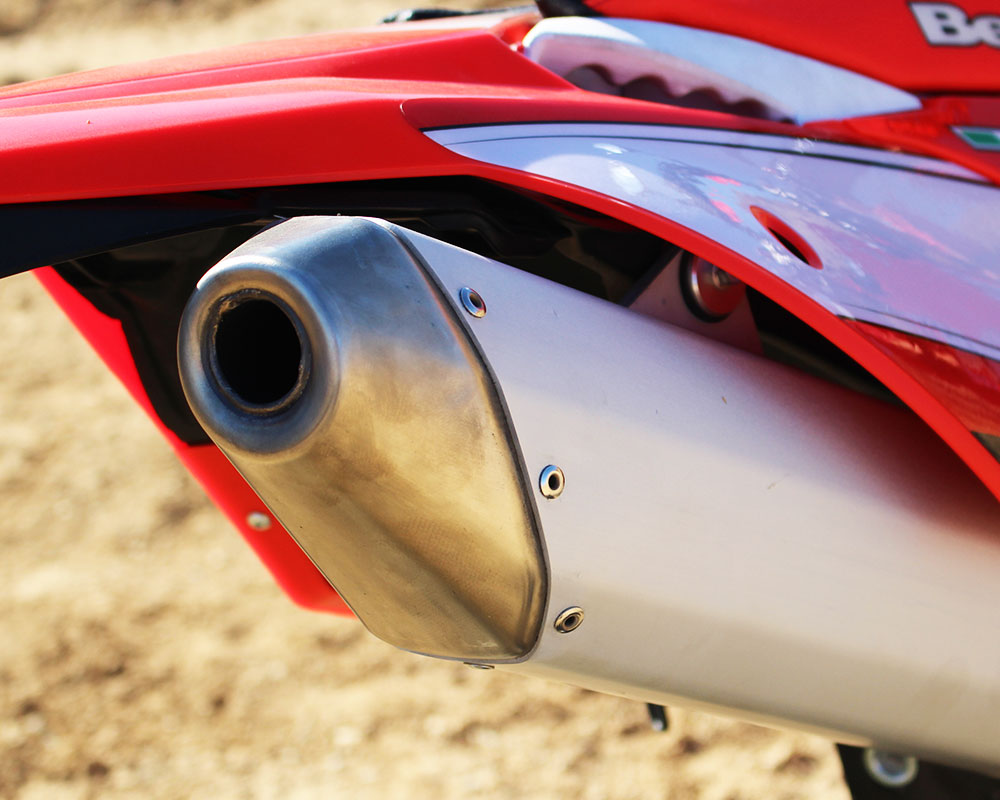
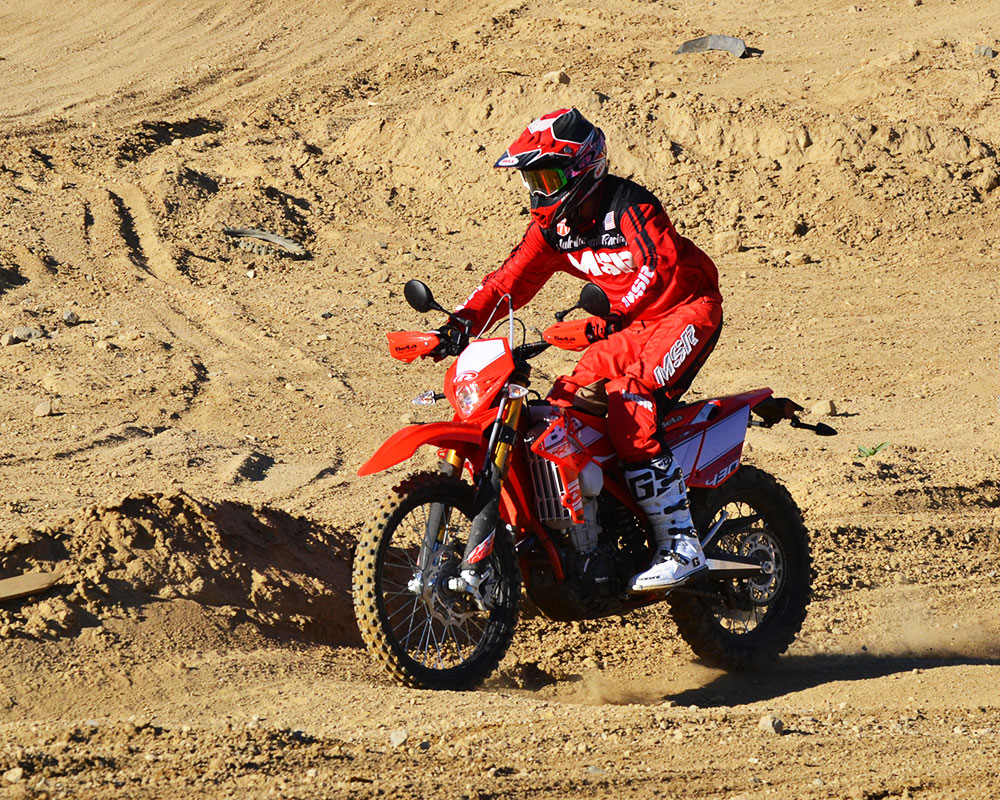
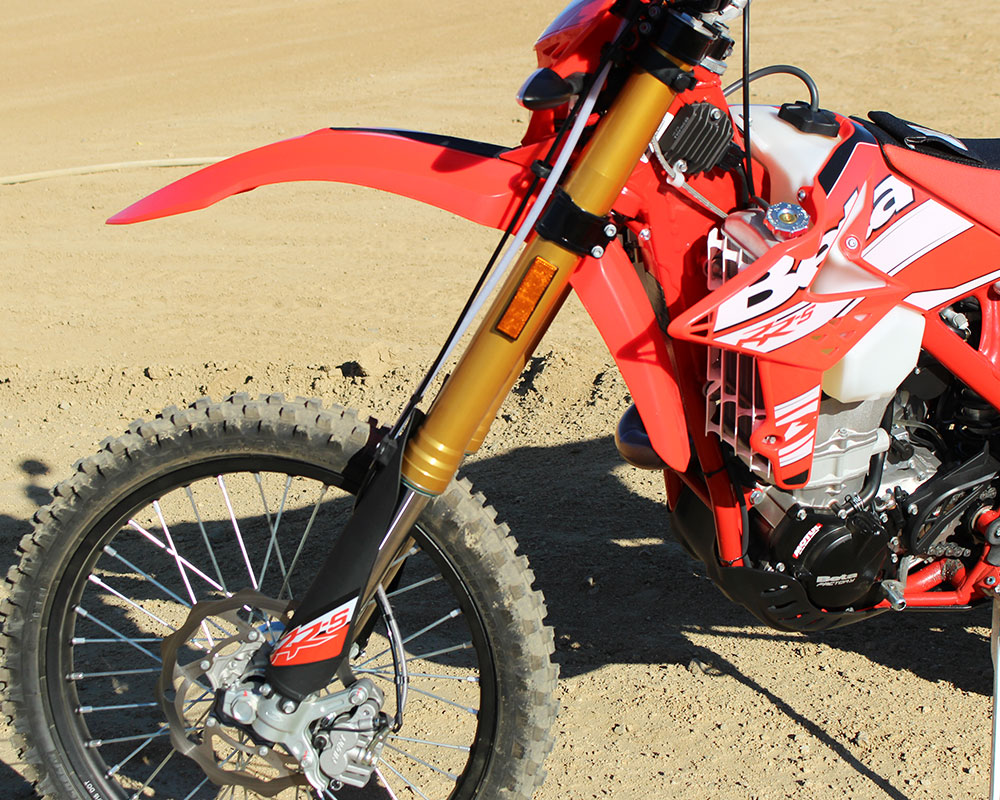
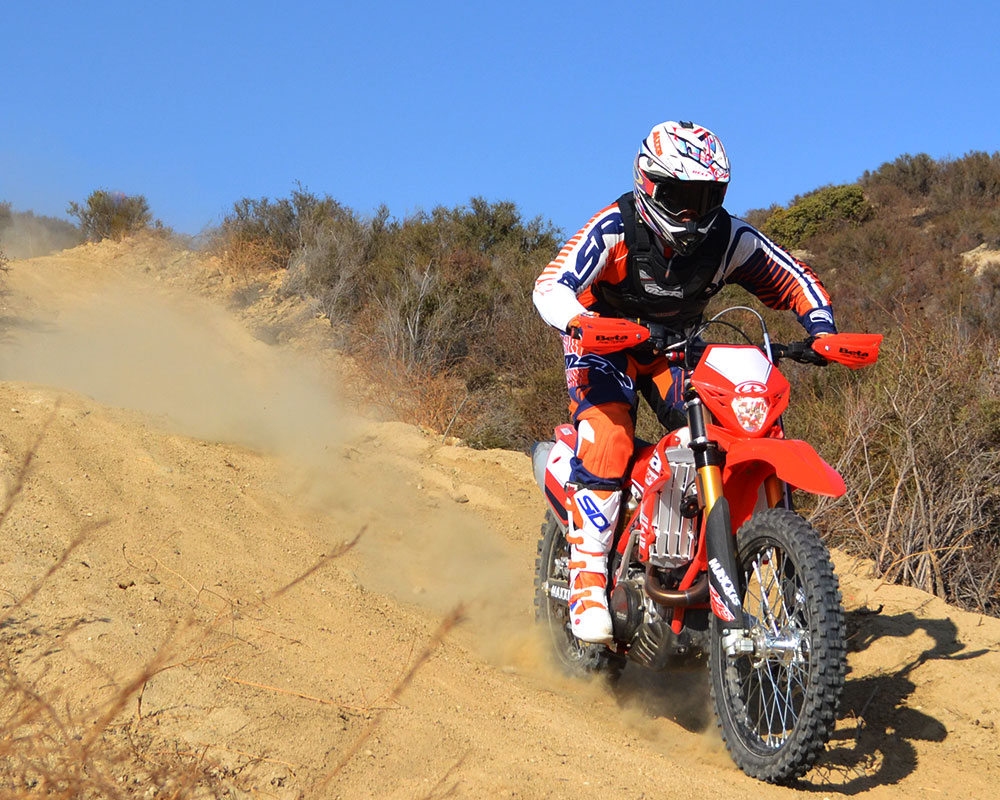
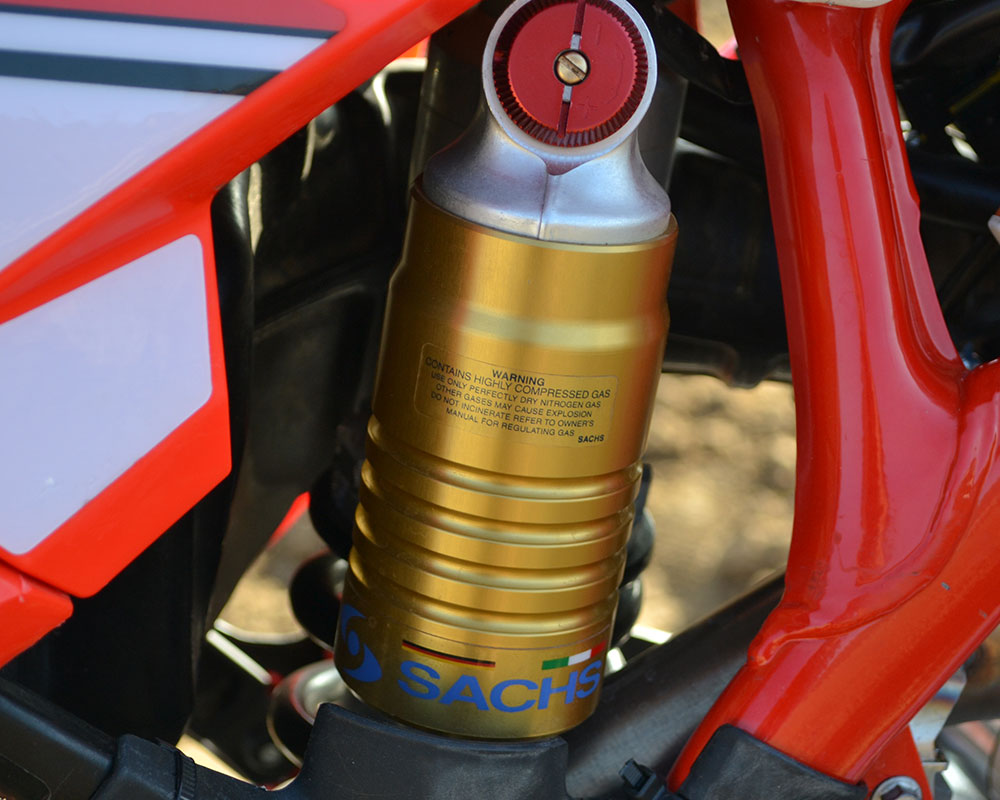
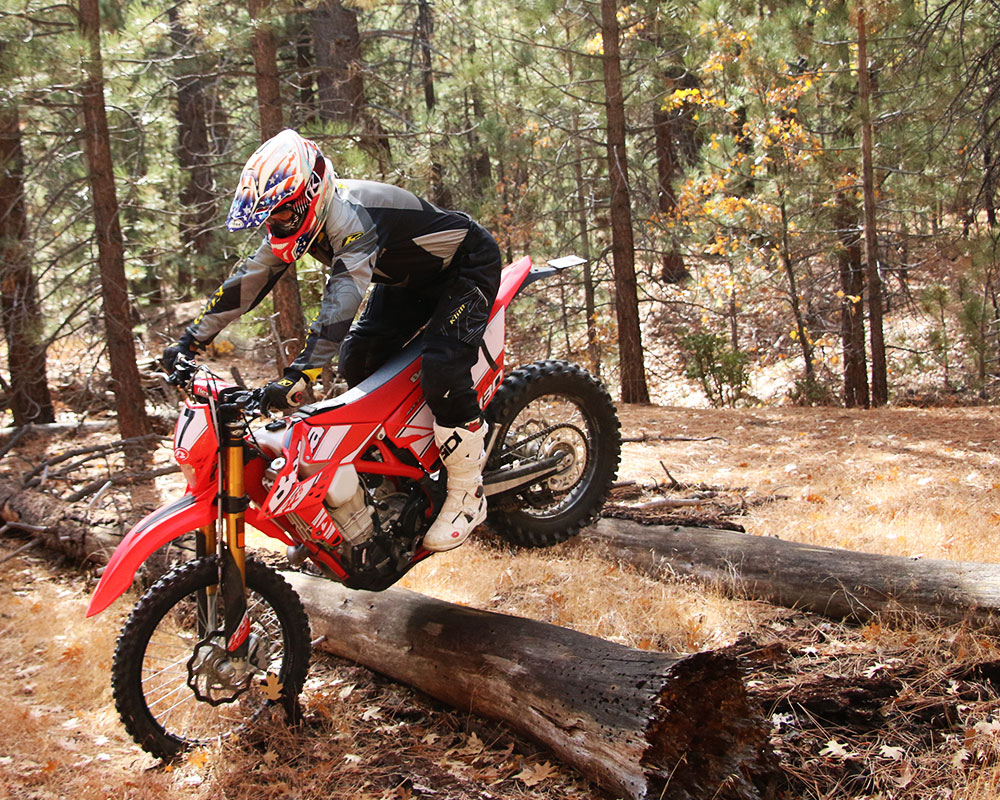


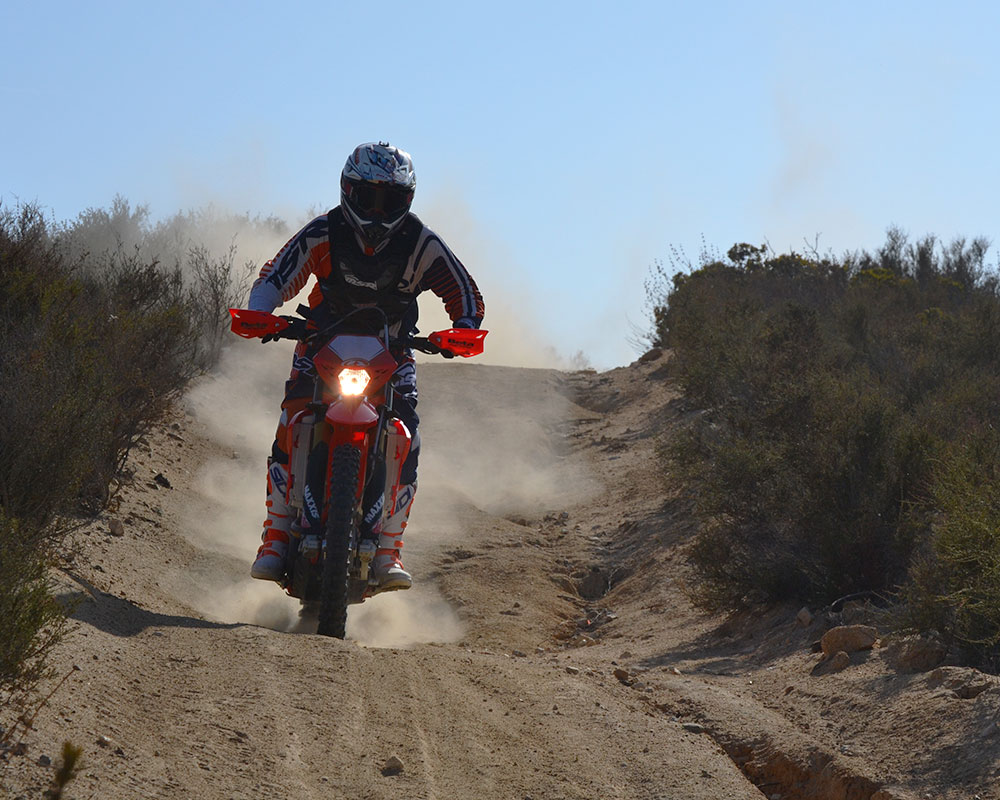
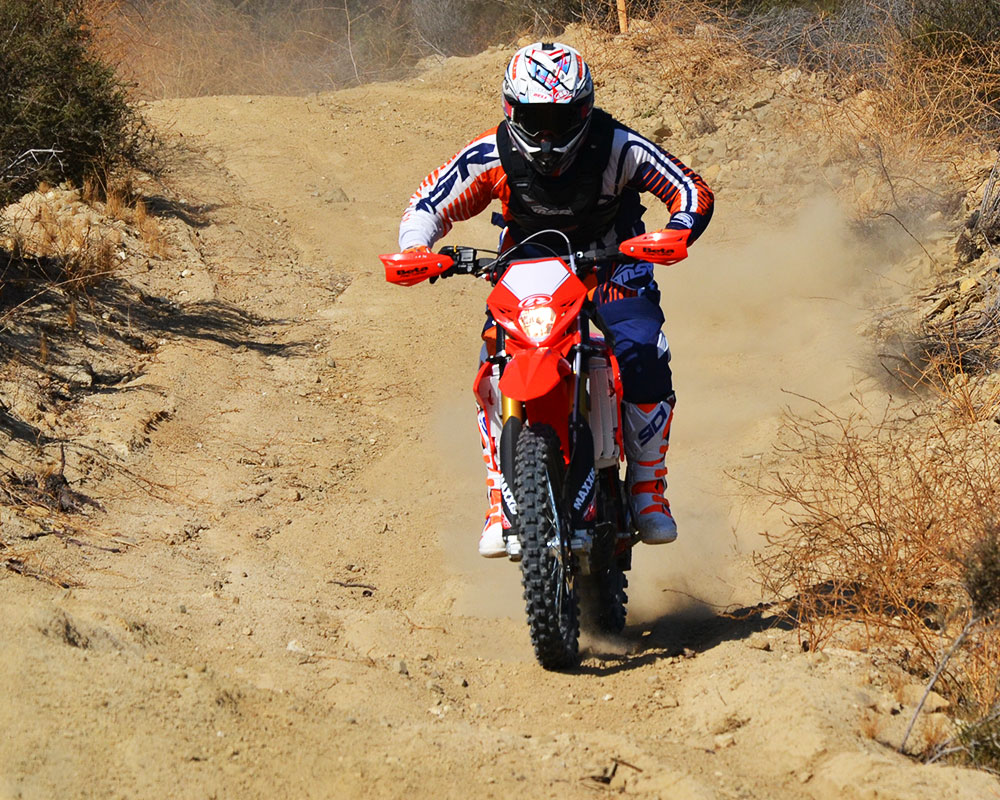
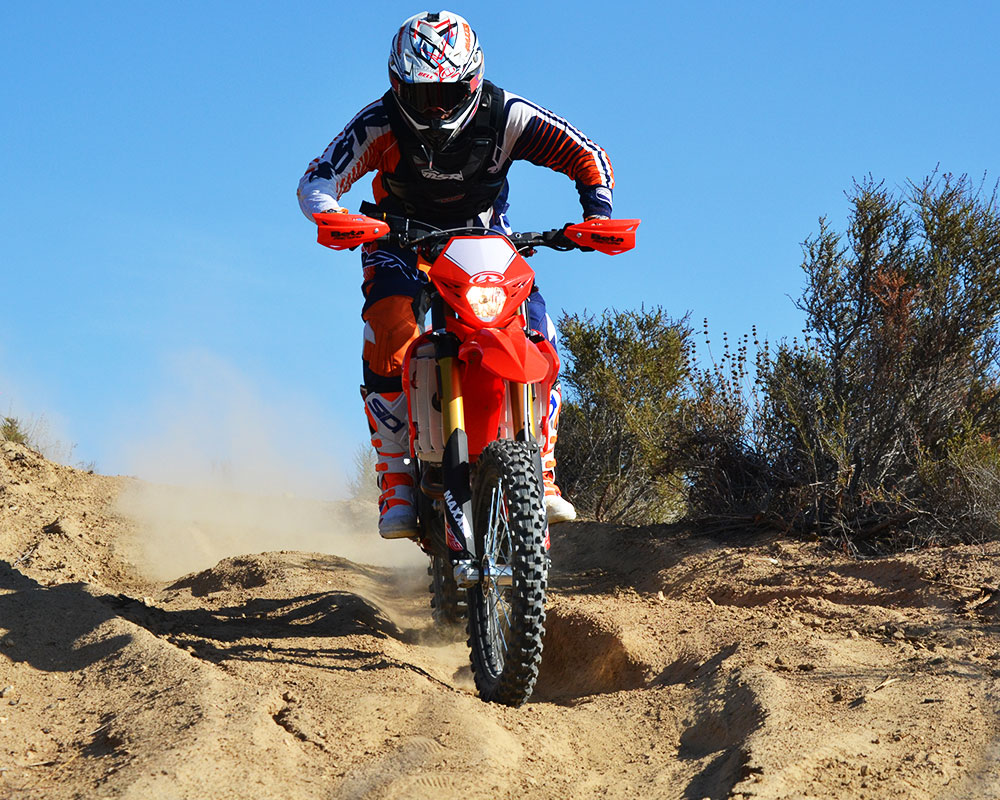

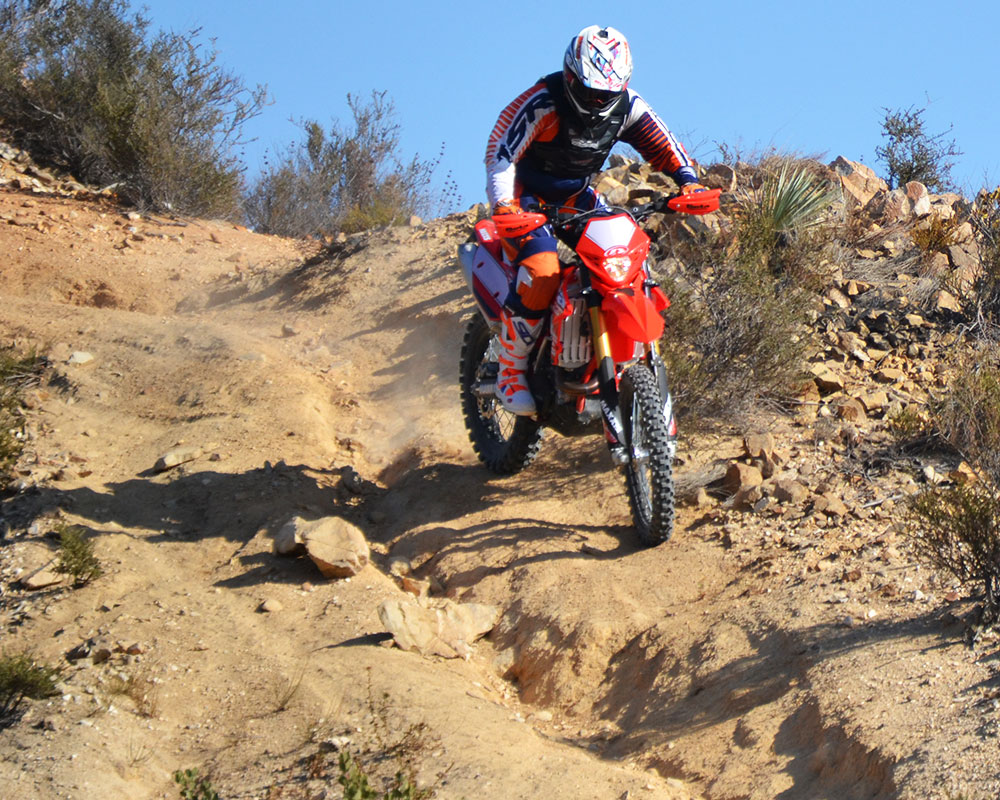
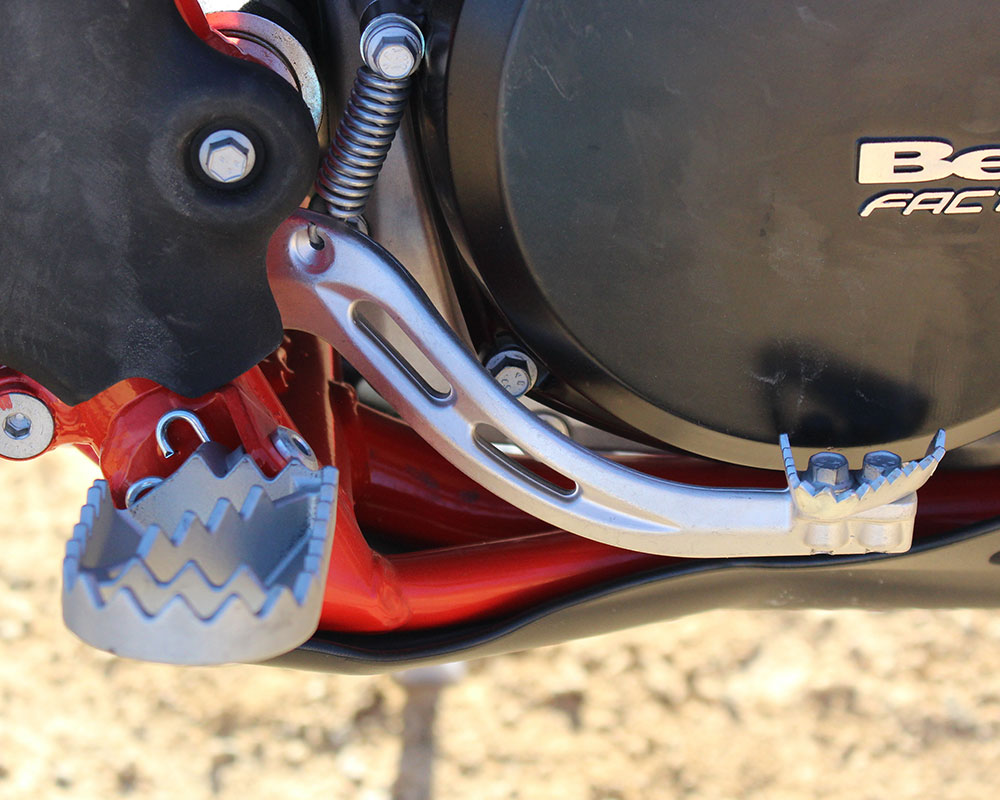
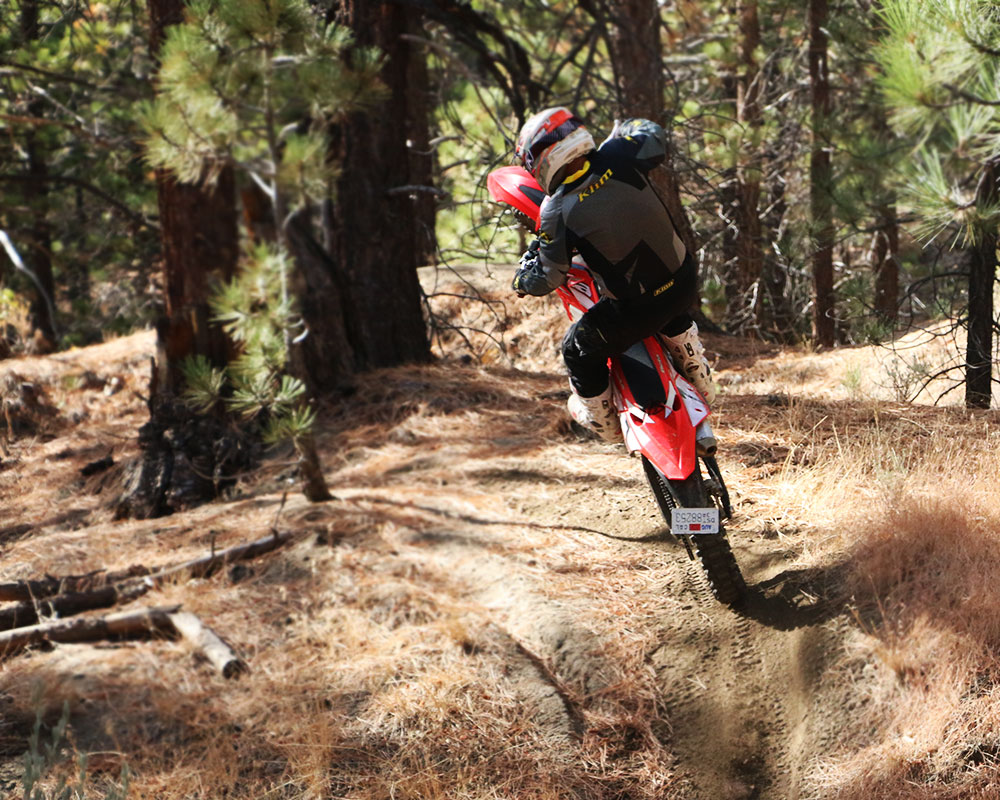
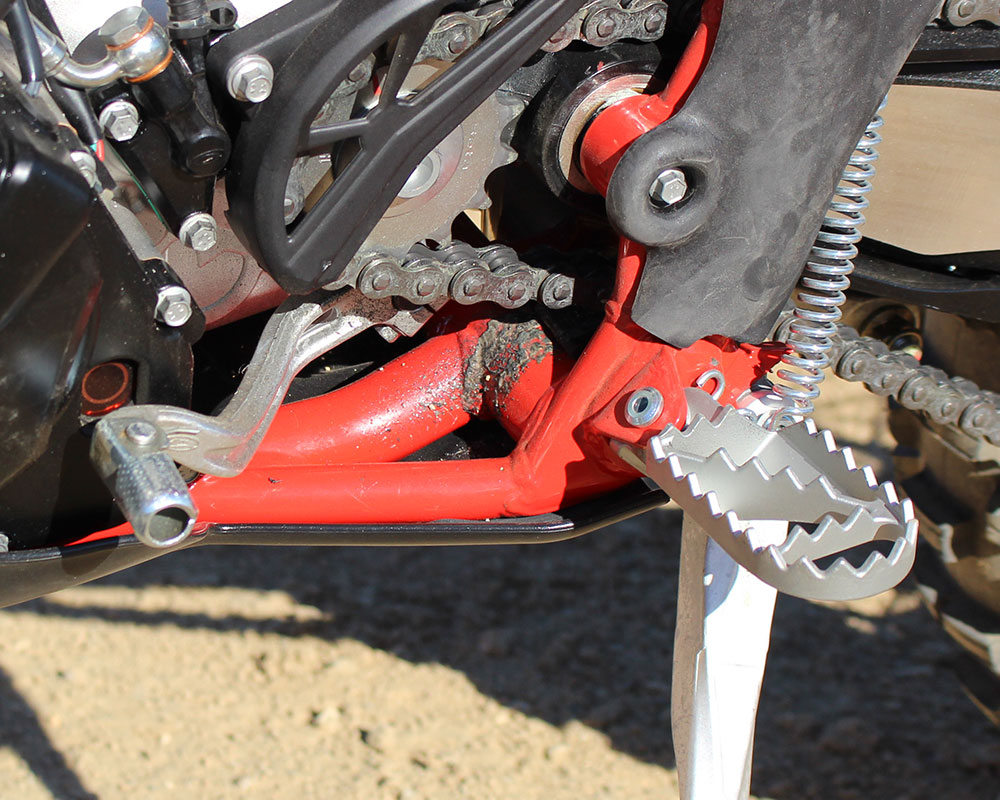
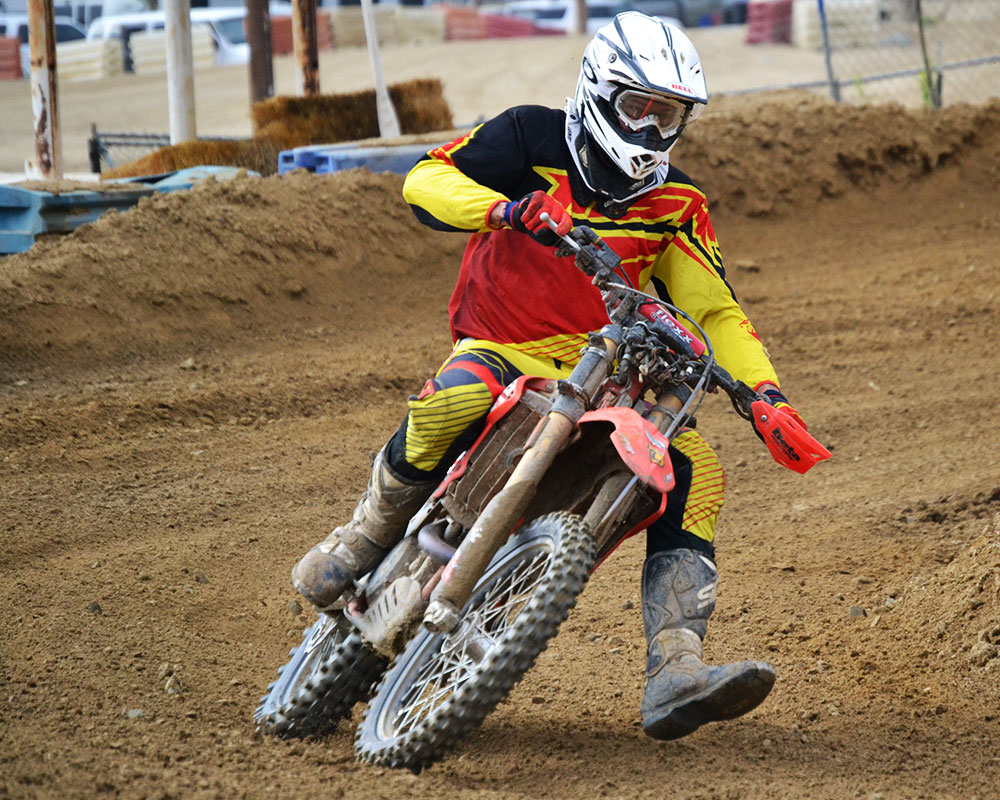
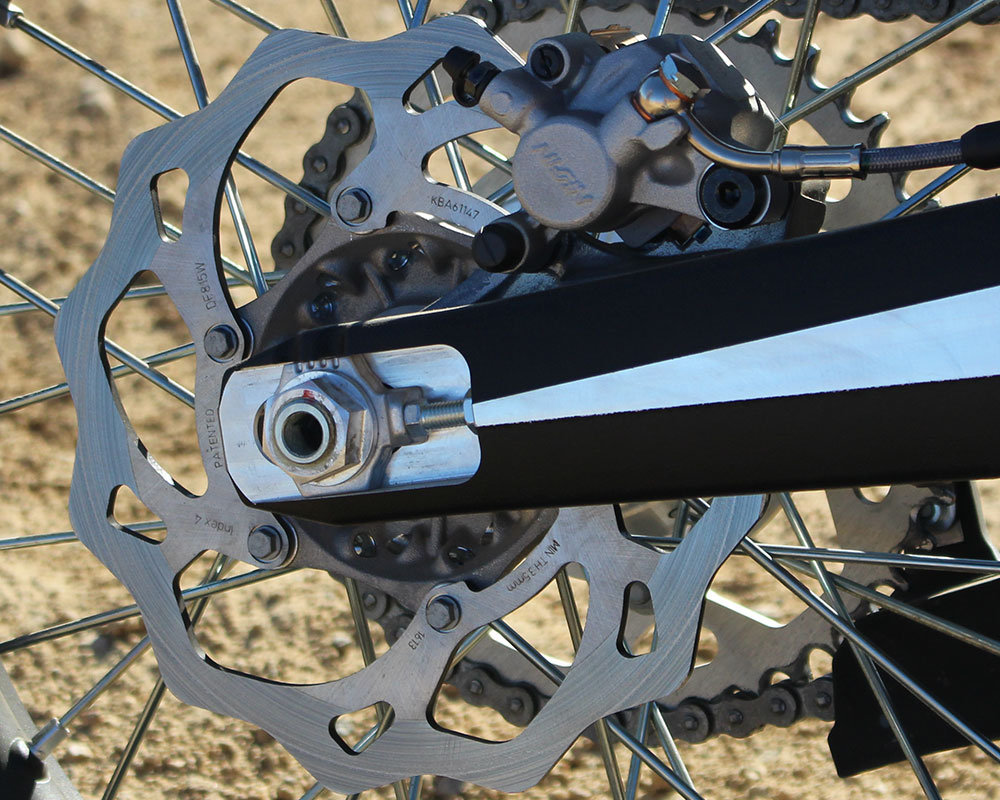
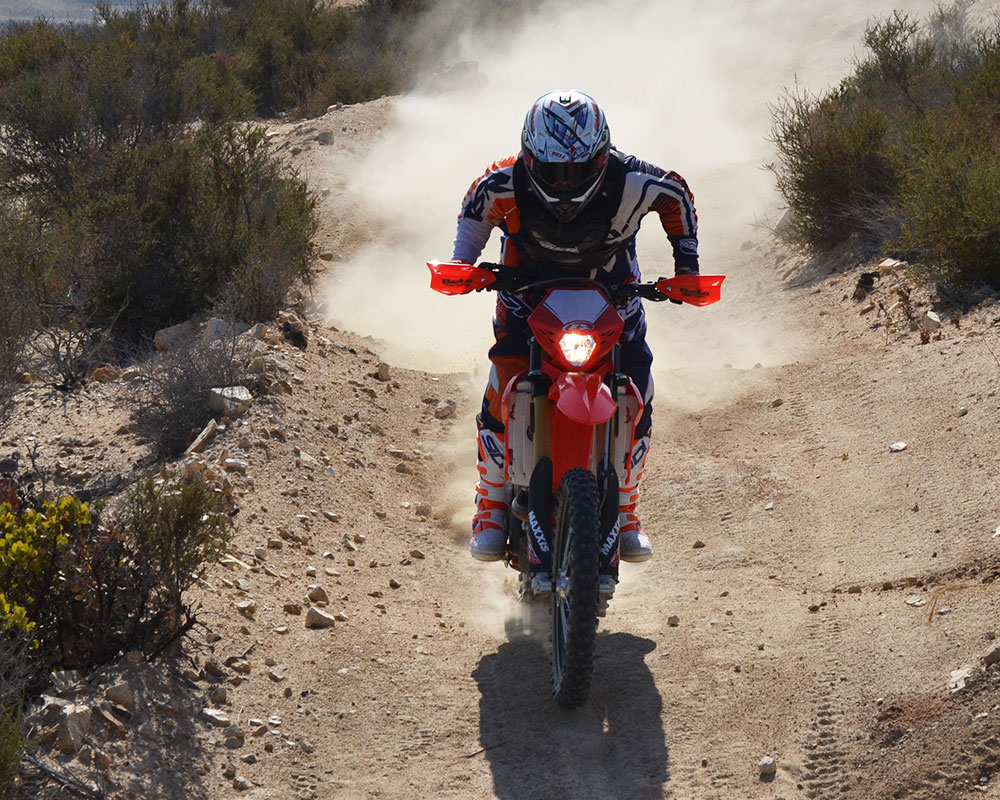
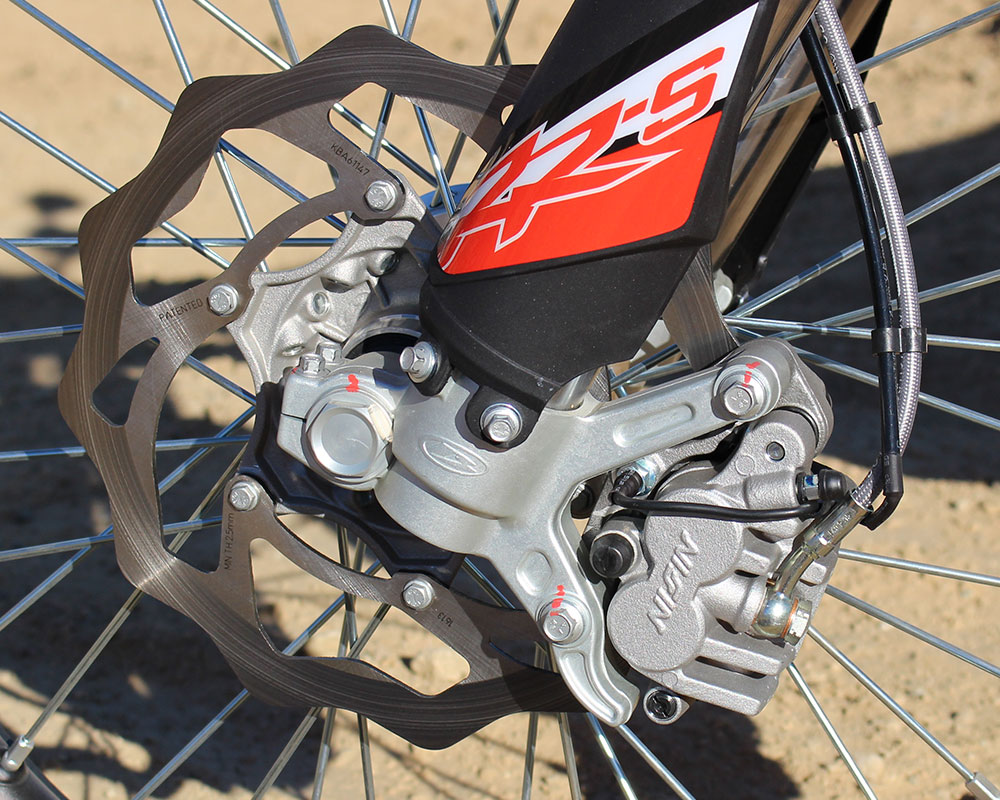
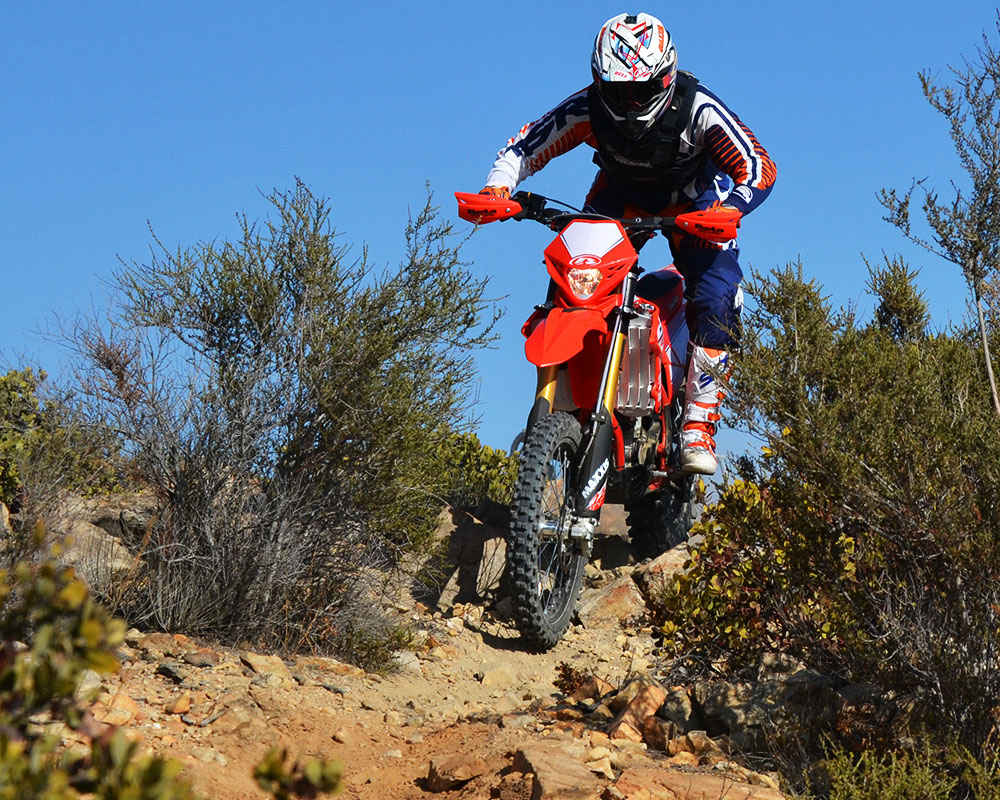


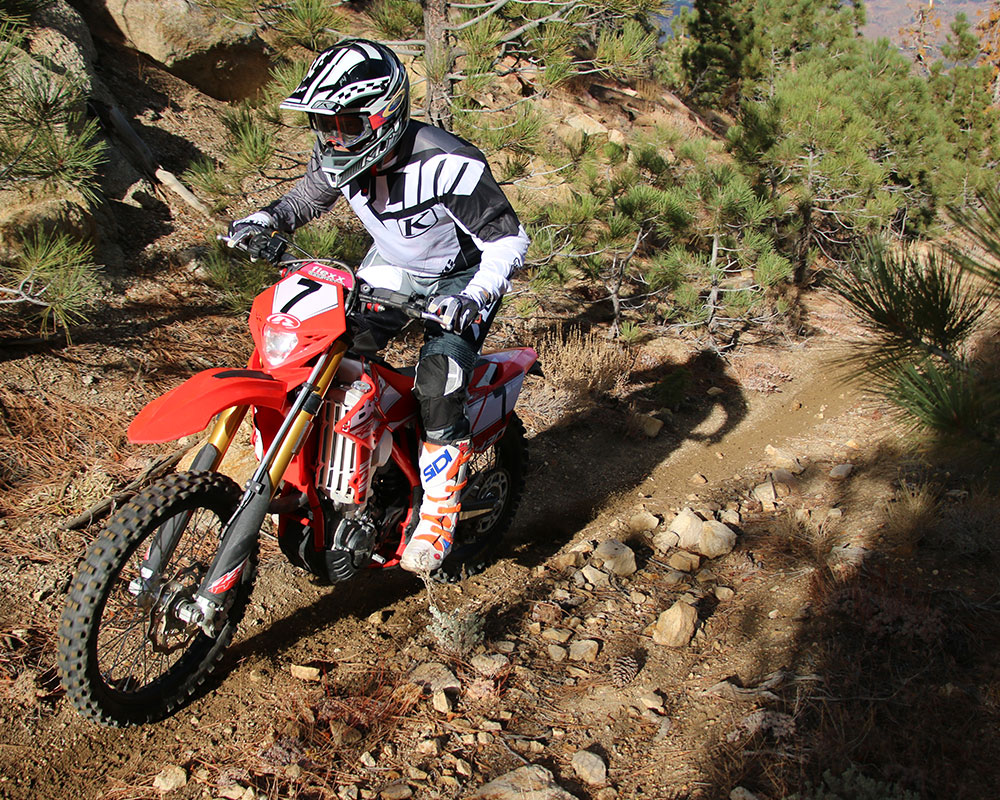
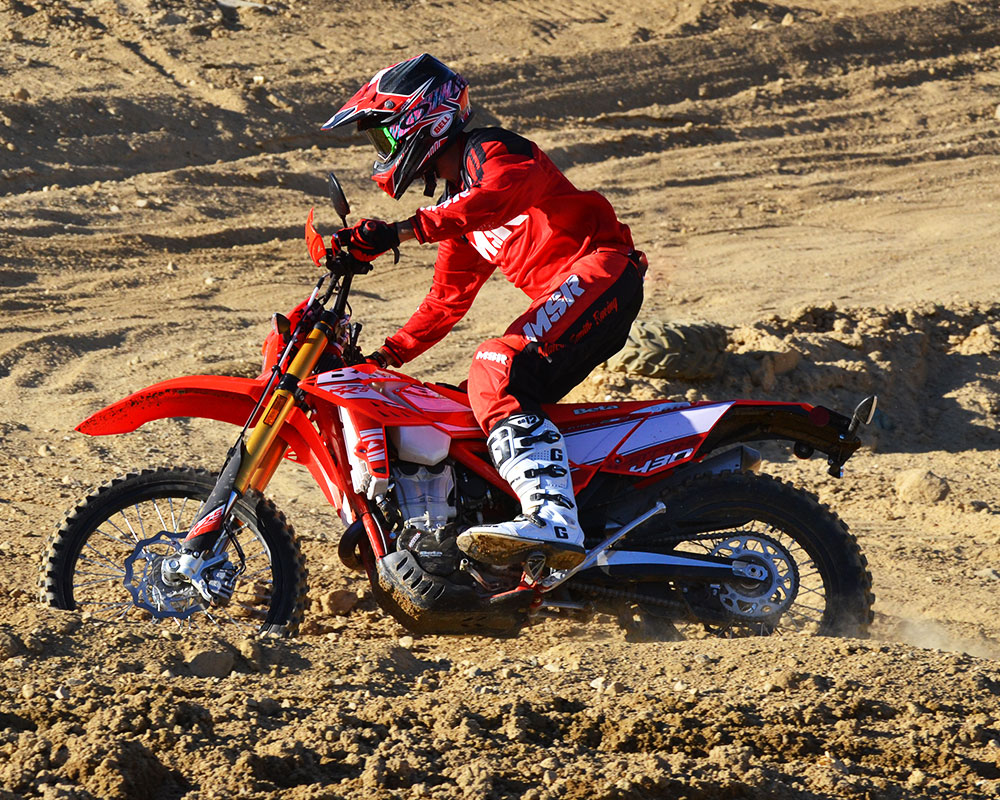


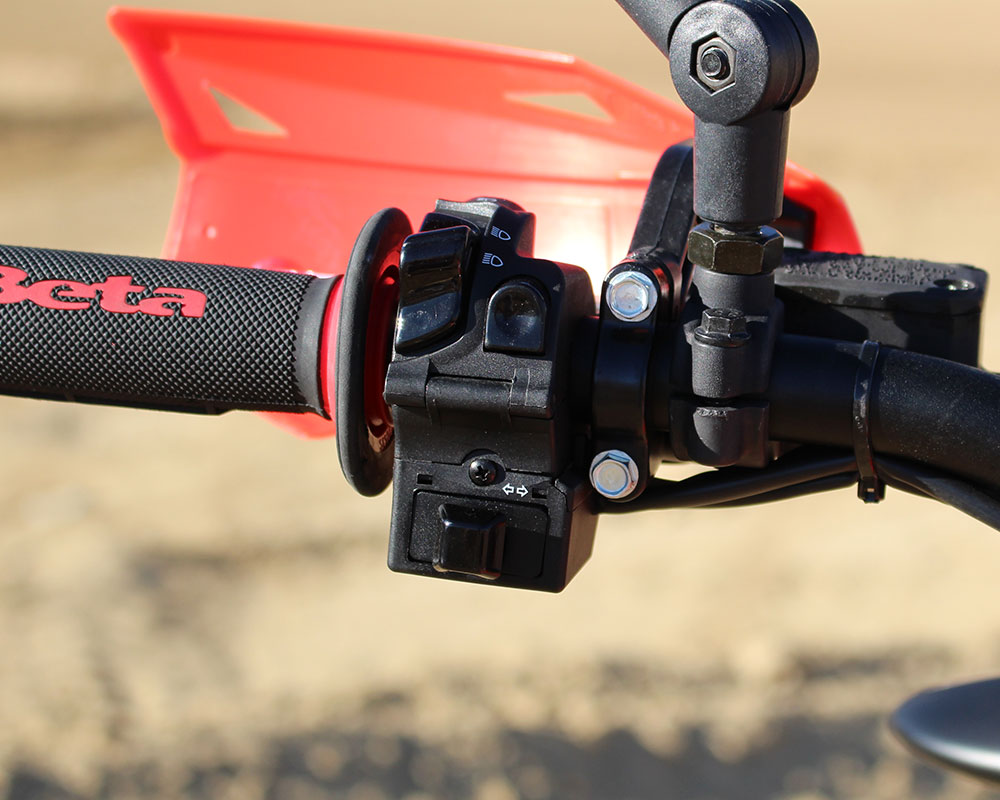
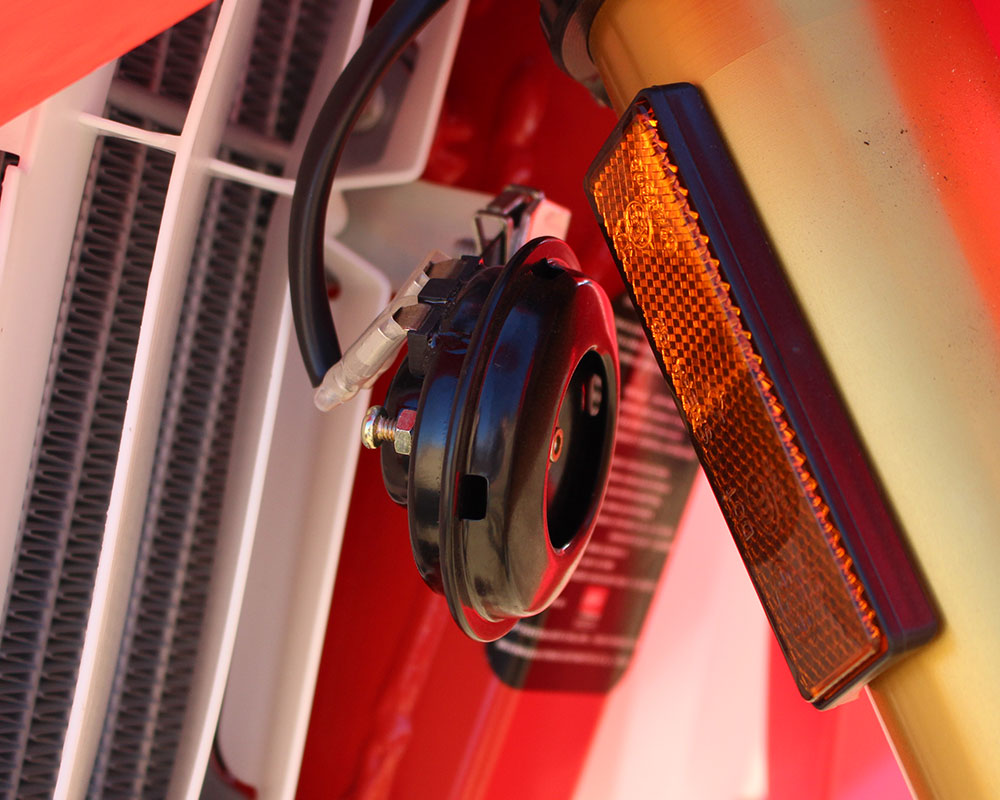
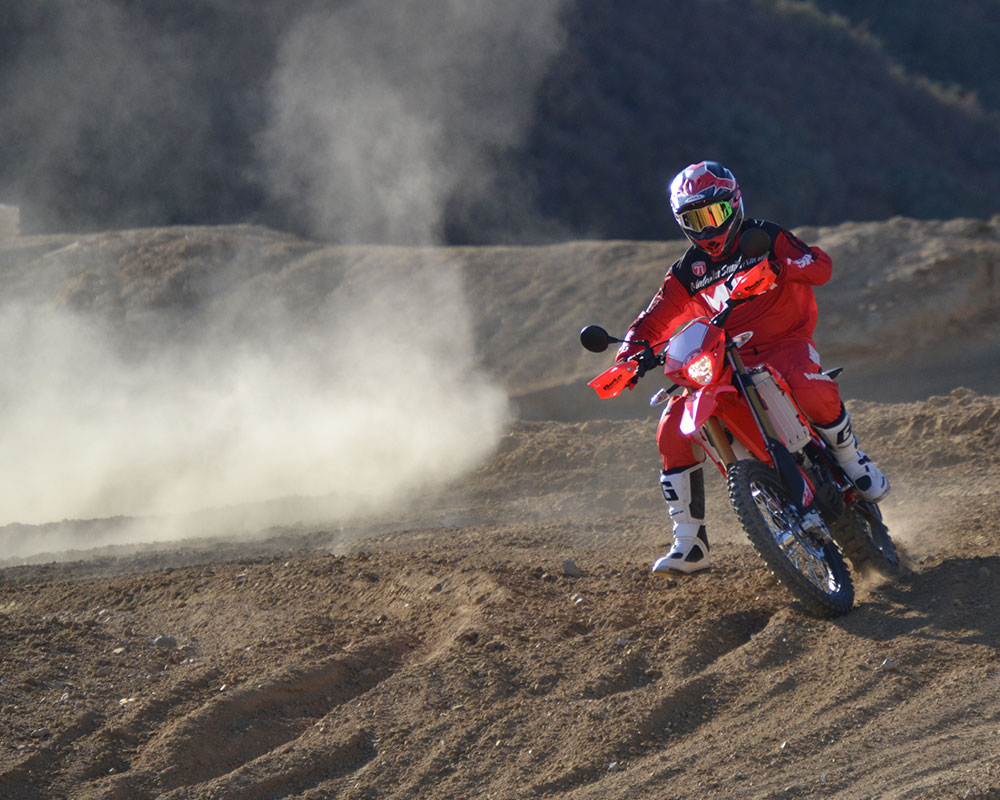

10 Responses to “2017 Beta 430 RR-S”
Paul
Great article, per the usual. Really appreciate your writing style. Way too much to ask, but I’m sure a lot of us out here would love to know how this bike compares to it’s 350 and 500 brethren. Keep up the great work.
Jimmy Lewis
You mean other Beta displacements or against KTMs?
Jimmy Lewis
Check the wire that goes to the coil. It is right above the header and we had a small issue with ours at about 40 hrs on the bike. Other than that, have fun!
Jimmy Lewis
Again it all depends on the rider and what traits he or she likes. Use RPM and how much a rider likes to rev a bike as the best gauge. The more revving the smaller displacement.
Jimmy Lewis
We run it at 12 most of the time on the larger tire.
Me
Are you sure that these bikes weigh 278 pounds full of fuel ? That is 15 pounds more than the YZ450FX (263 pounds) and about 40 pounds more than the Austrian 2017 450Fs.
Beta says they weigh 248 pounds dry. If “dry” means without fuel and the tank holds 2 gallons, it should weigh about 262 pounds. (248 + 2 x ~7 = 262.)
Jimmy Lewis
That is exactly what our scale said. The same one we weigh all test bikes on and it is very consistent and accurate.
Me
Good work then. Thanks for weighing it. I guess that goes to show how much weight a fast geometry can hide and how off the manufacturers numbers can be.
The Sherco 300 SEFR is like that too. My friend bought one. It weighs way more than what the spec sheet says. It hides it with a steep head angle, short wheelbase and probably very little triple clamp offset.
brannon fetzer
what is the standover height? I see the seat height is 36.6, but at 170 pounds with compression of shock? Can it be lowered on shock and/or seat? I’m only 5’6″……
Jimmy Lewis
We do not measure that. You can have the suspension shortened if you want to do it properly. Cutting the seat is an option but it all comes down to what you really want to lower the bike for. Remember, you don’t ride with your feet on the ground so upsetting the handling of the machine to get to touch the ground easier is generally a bad idea.